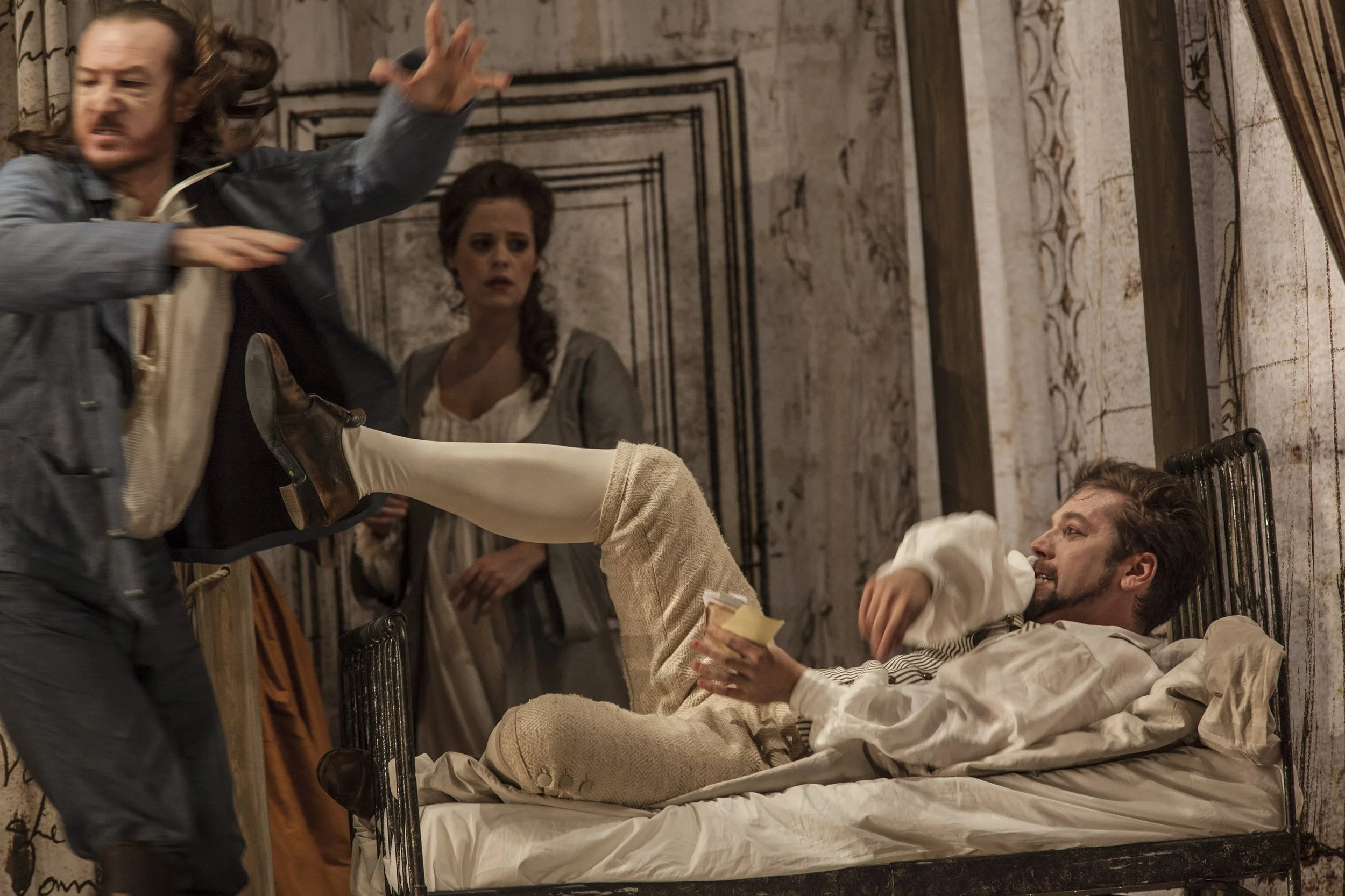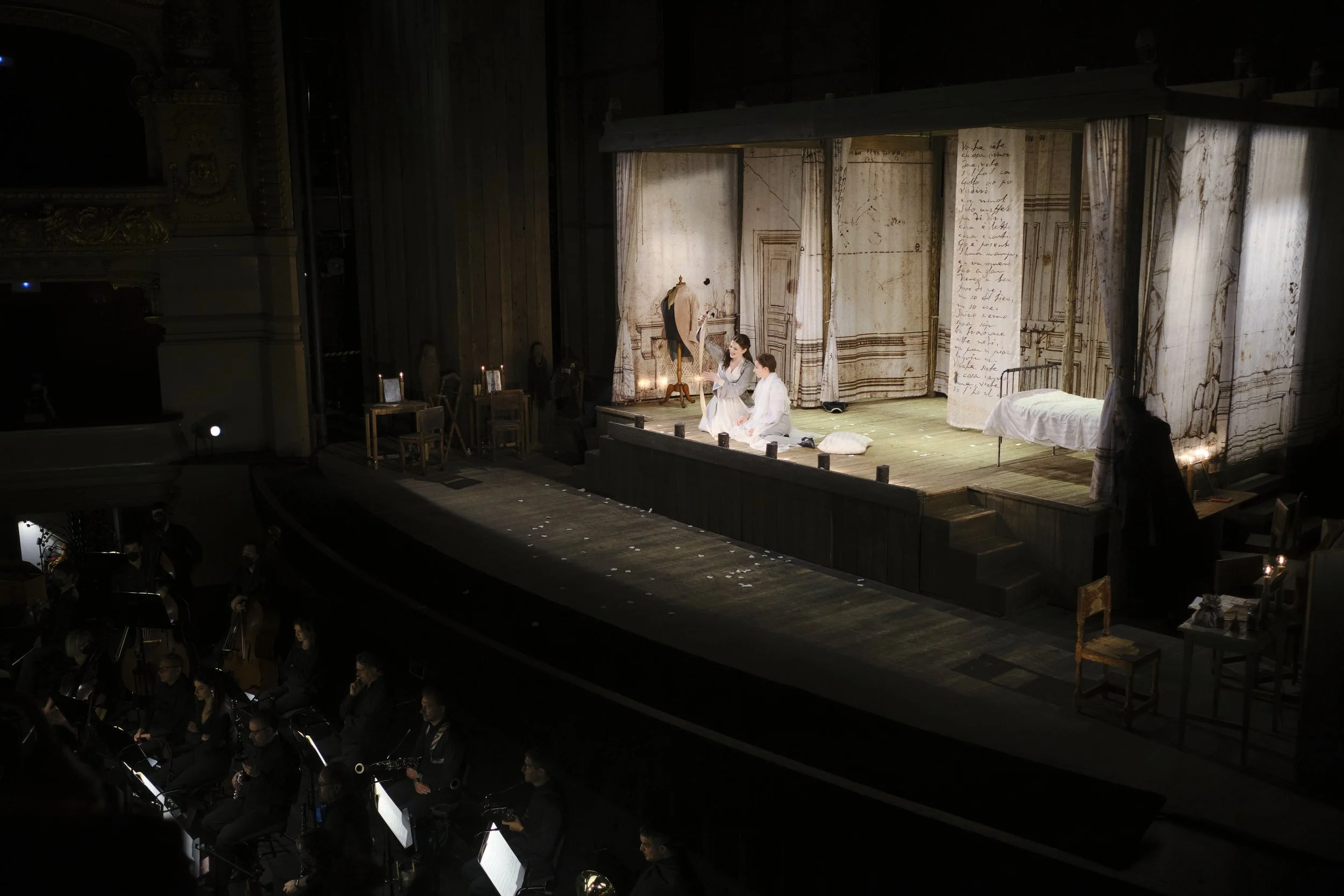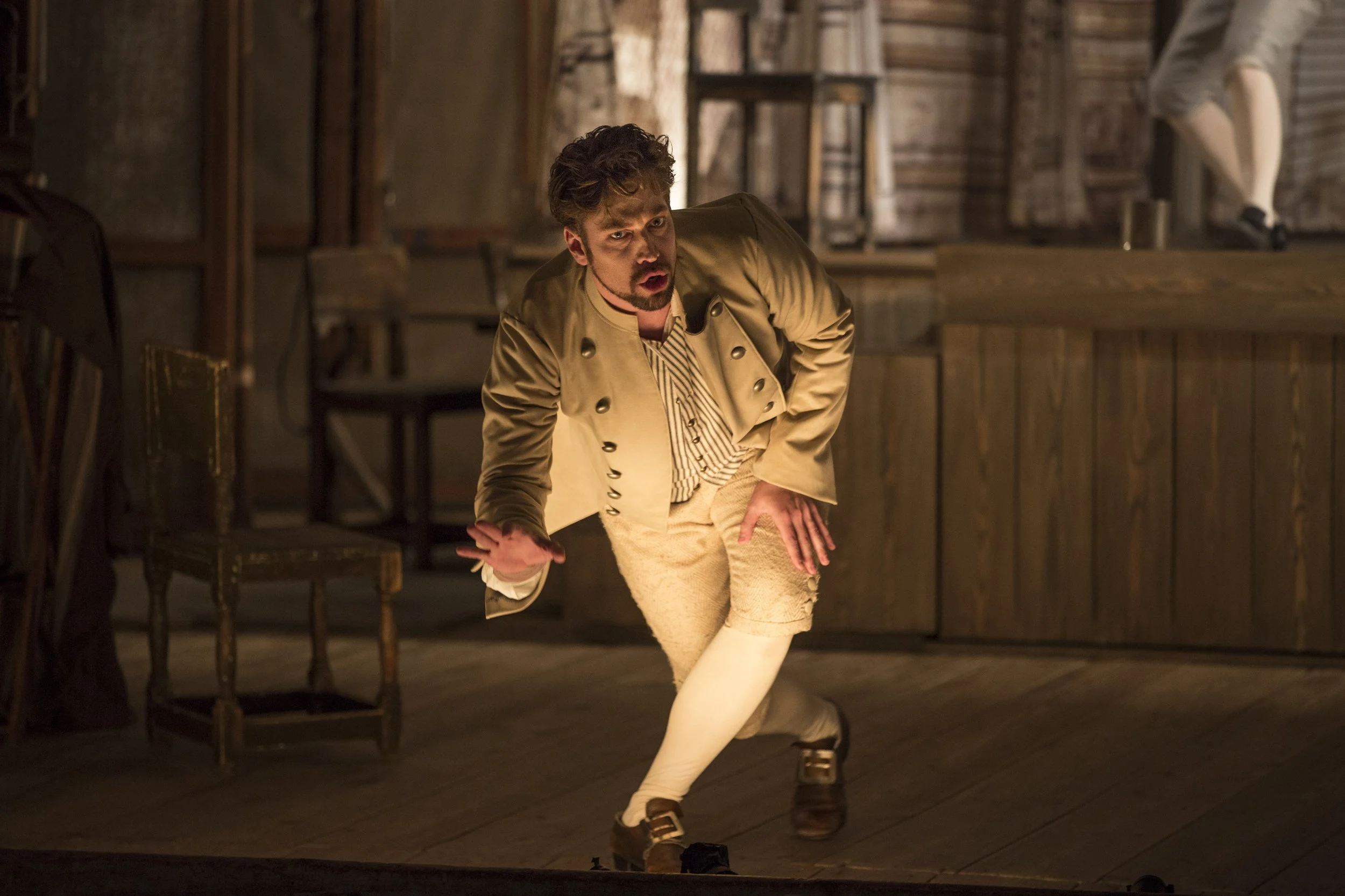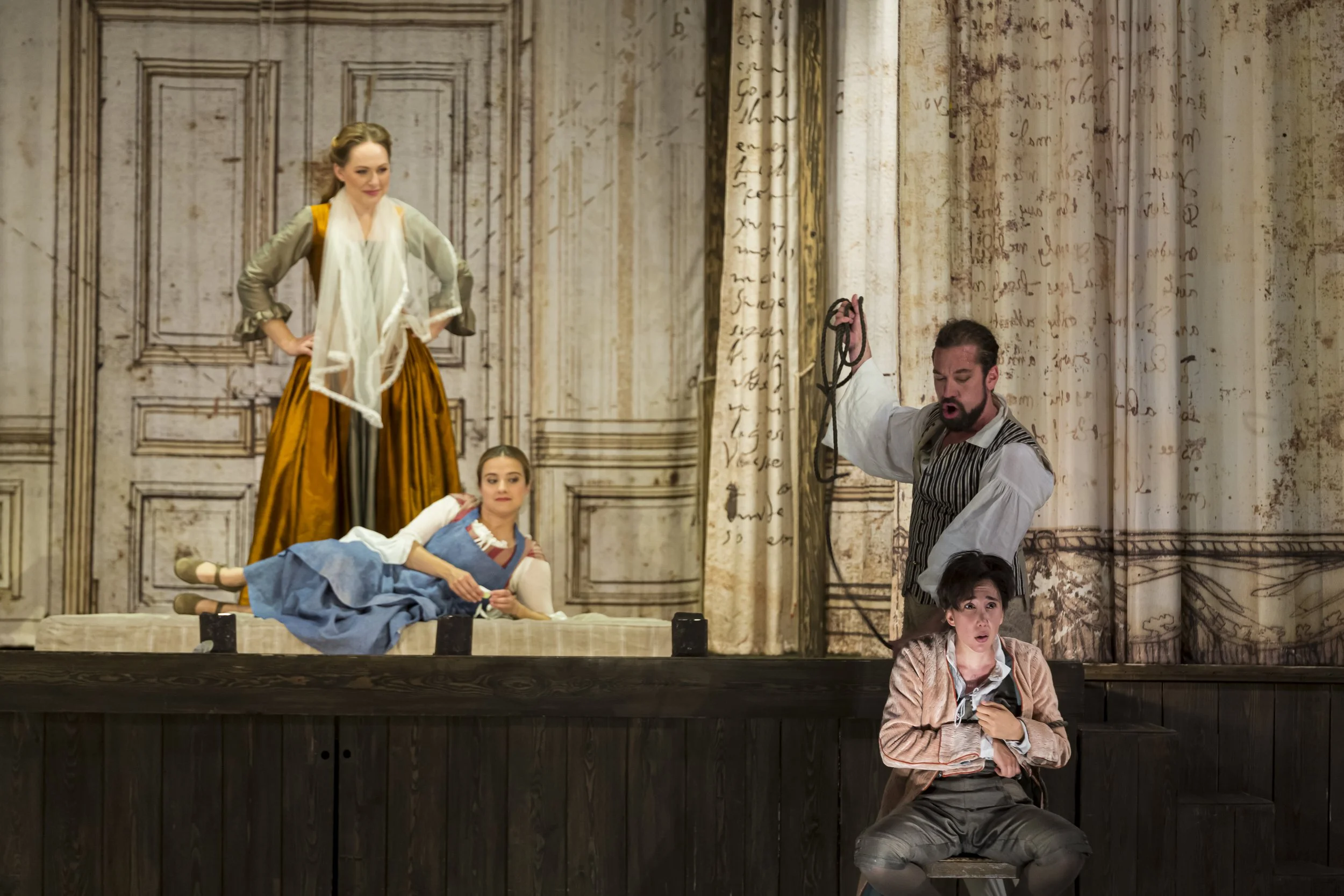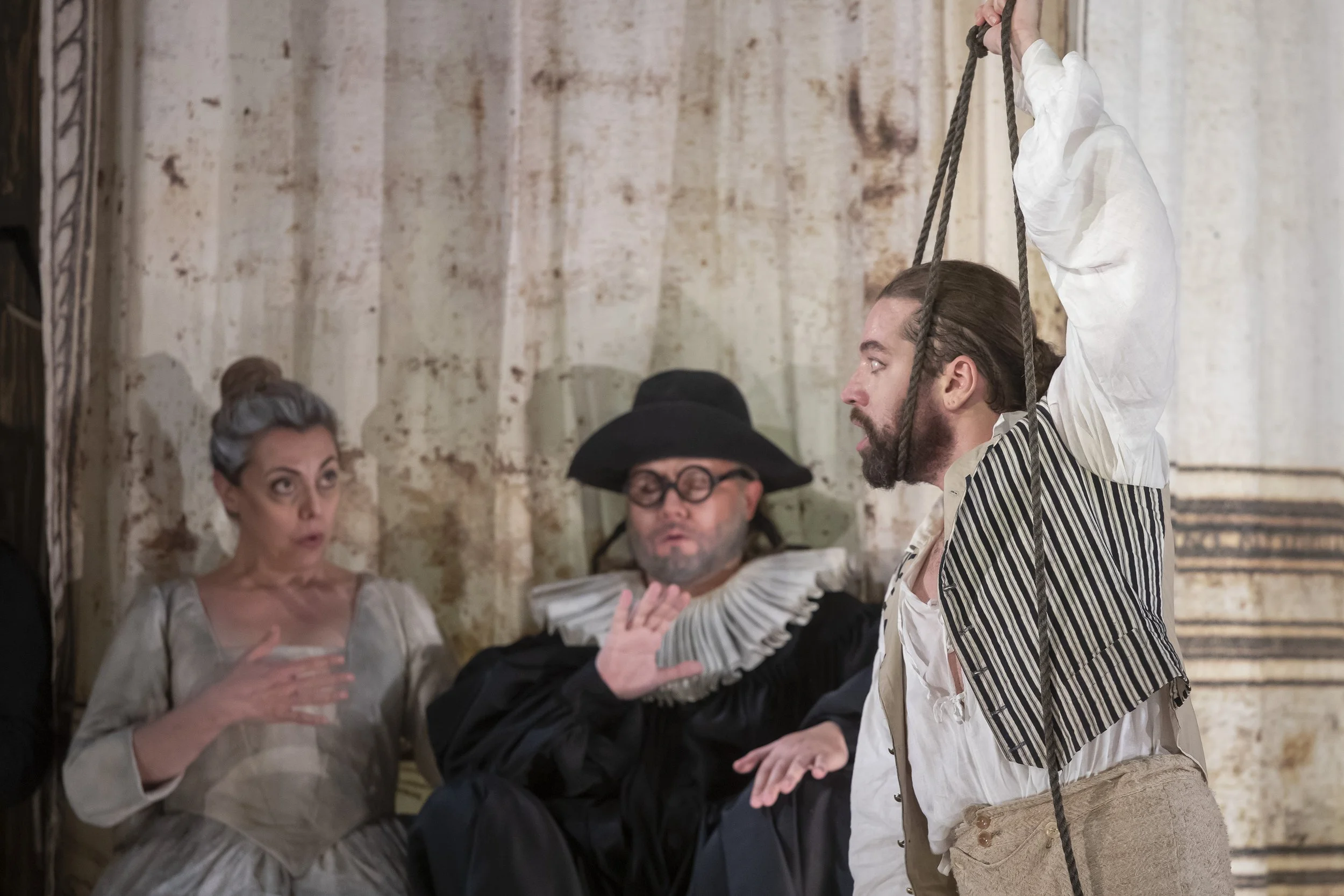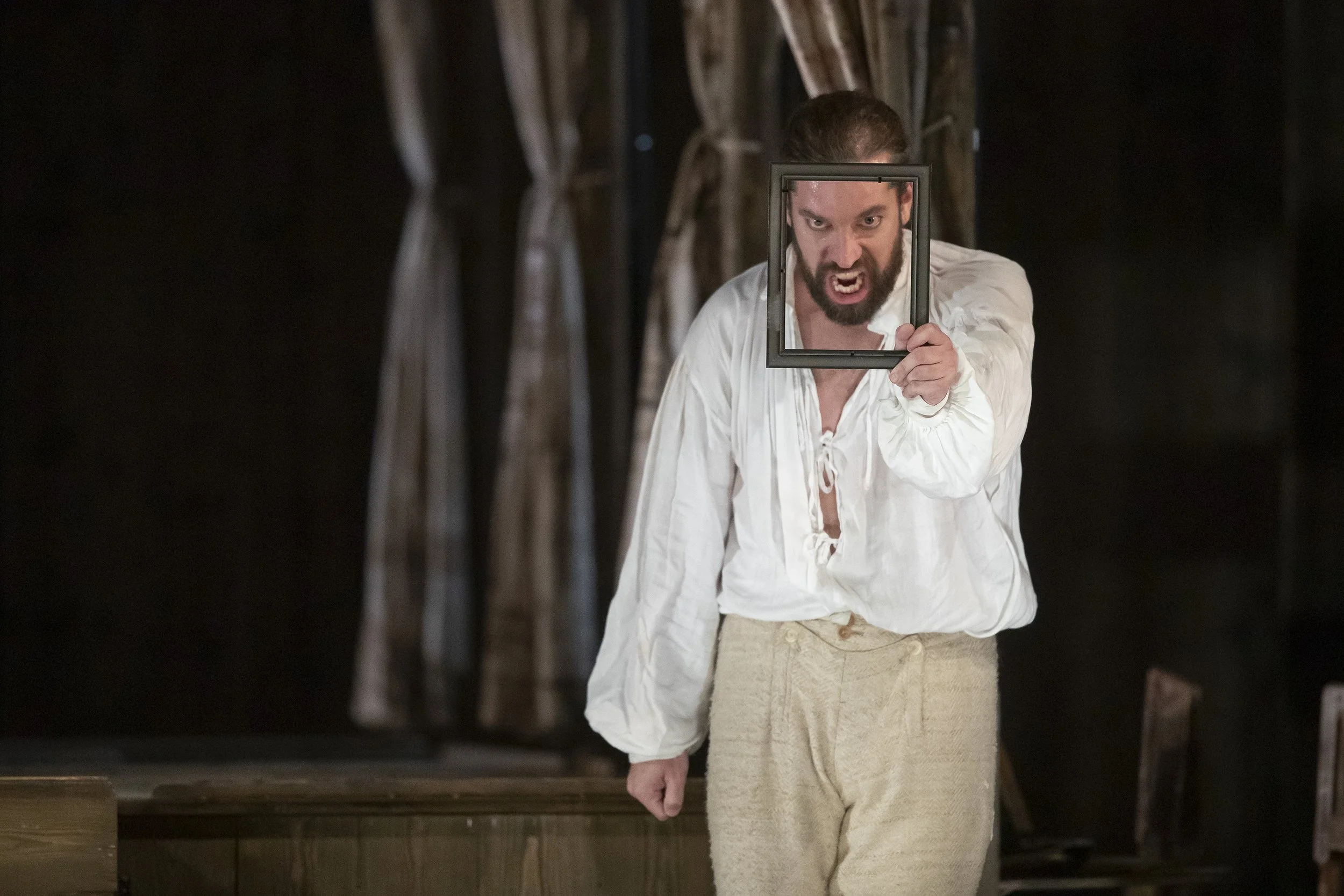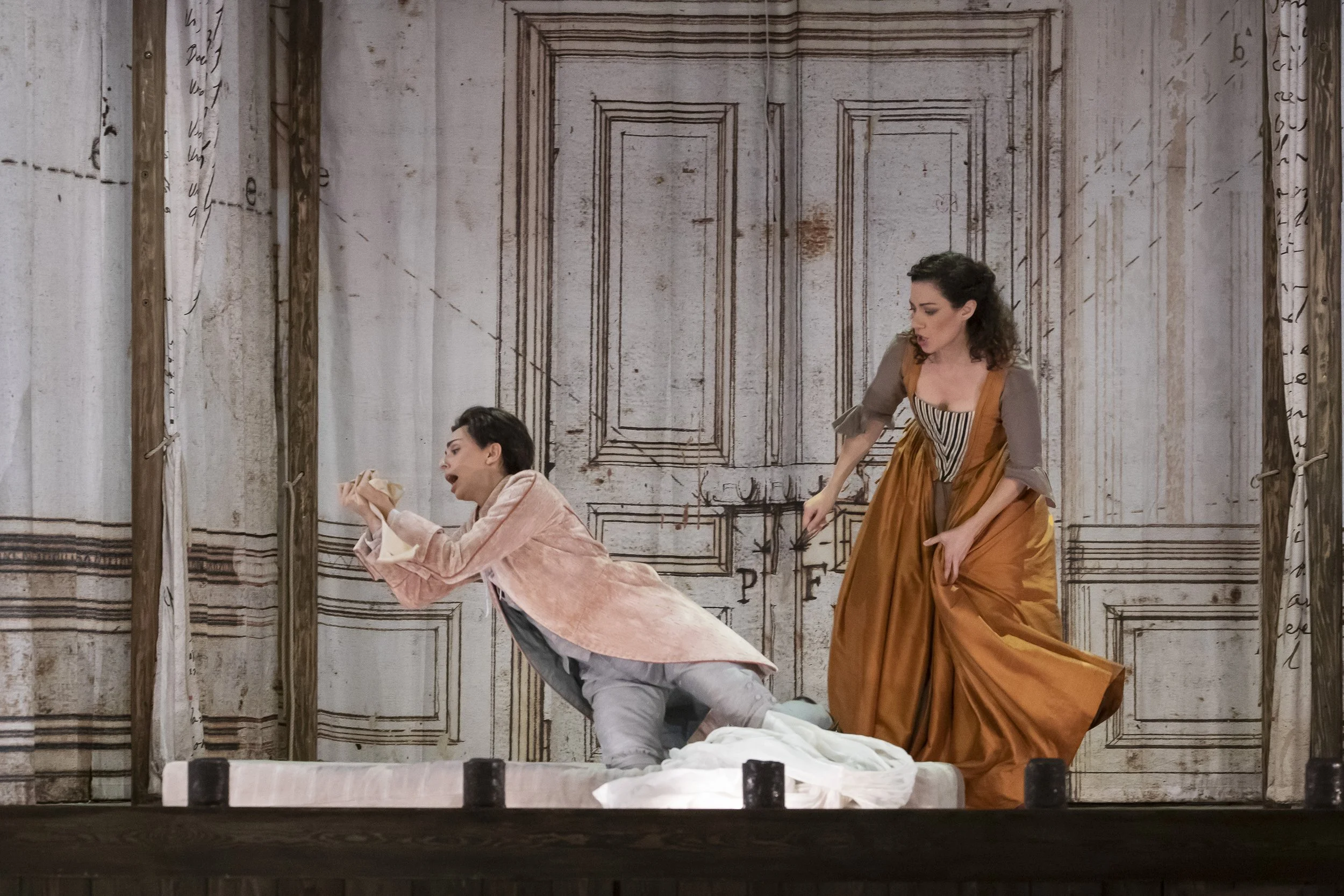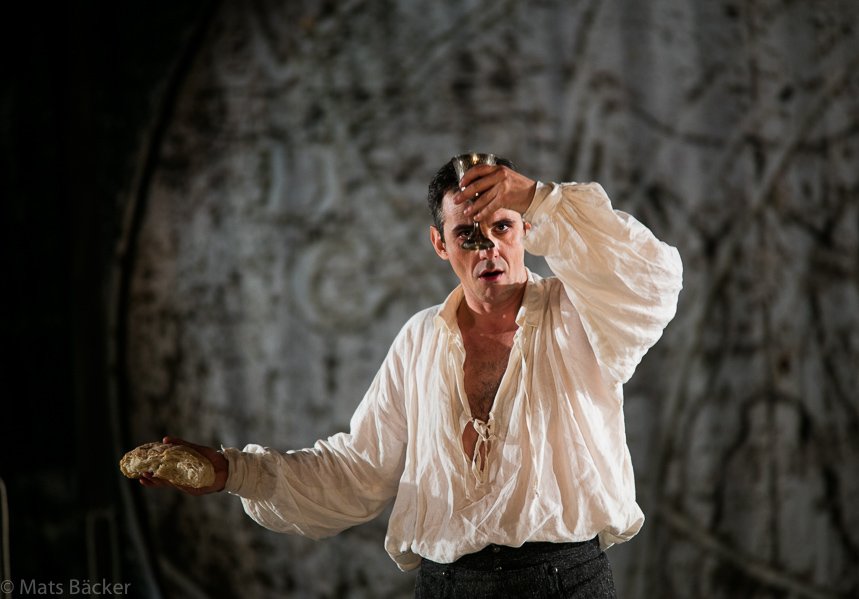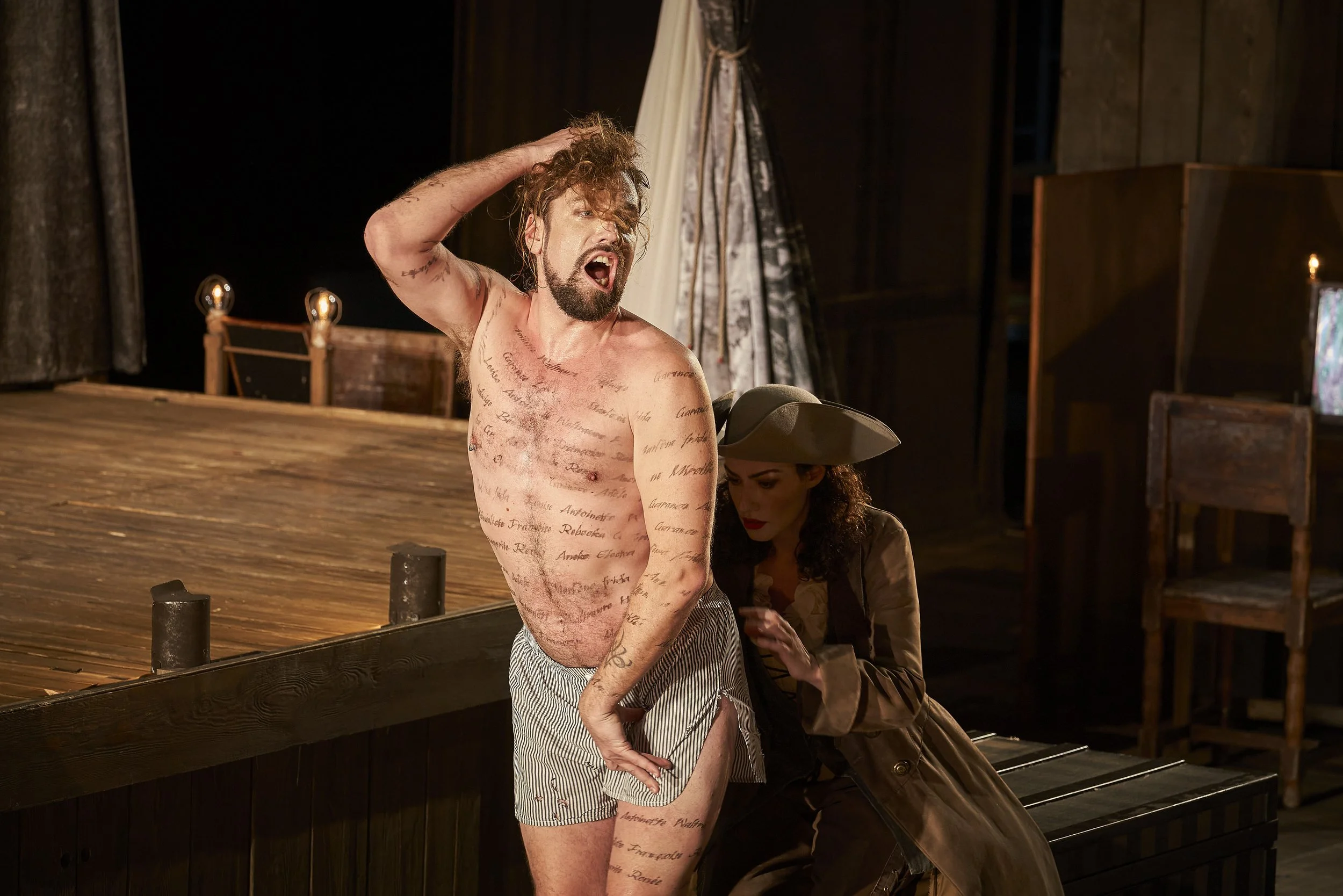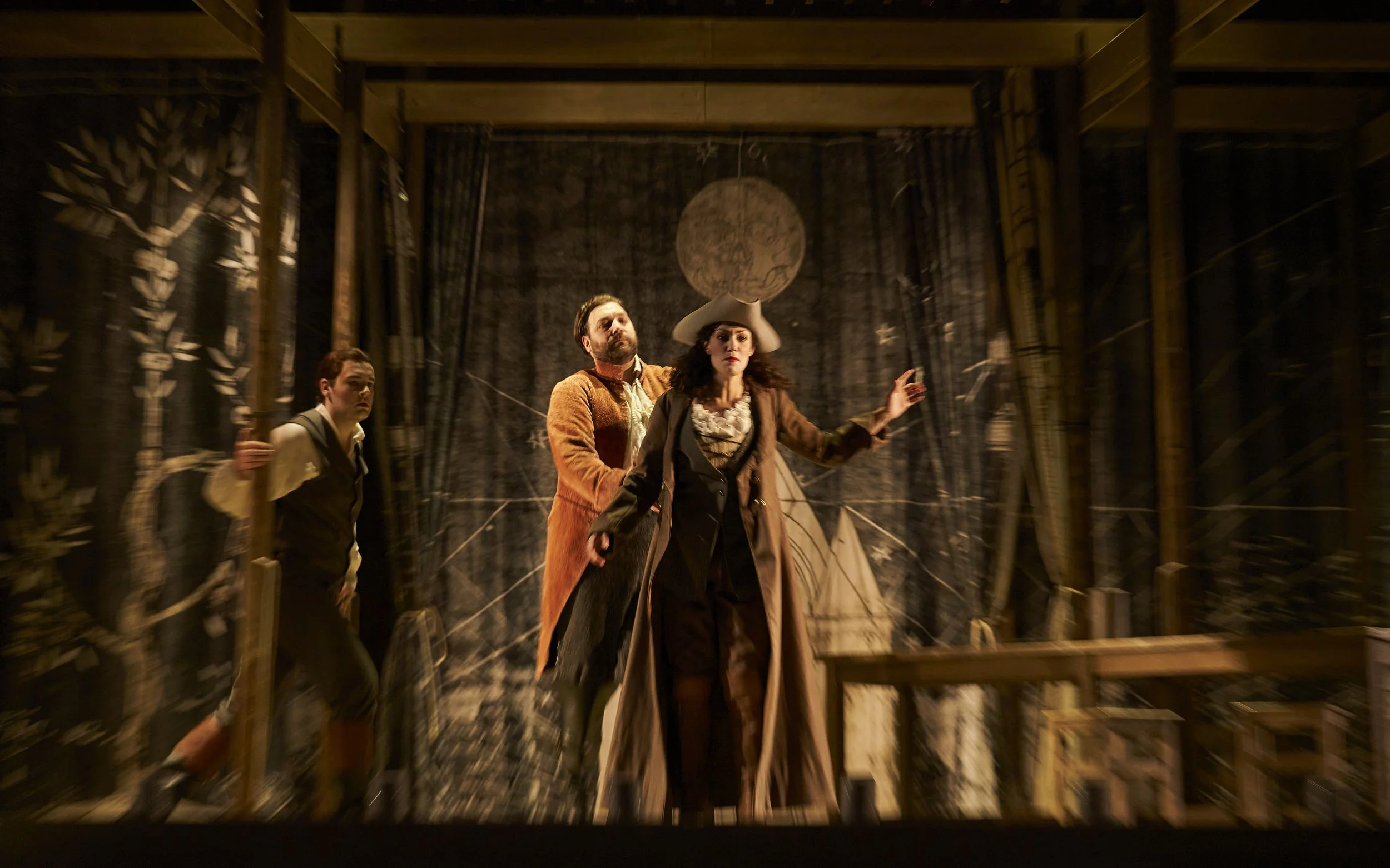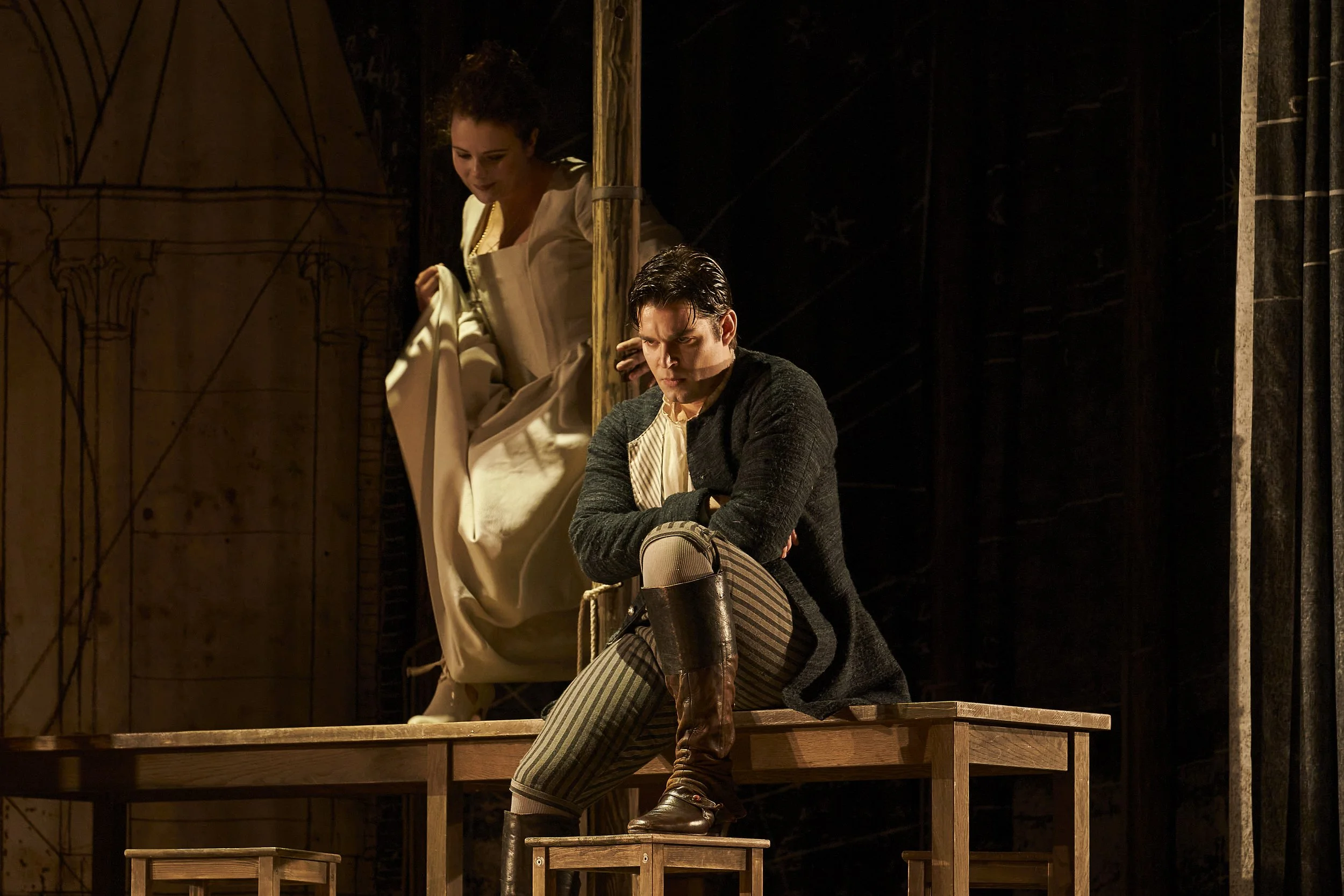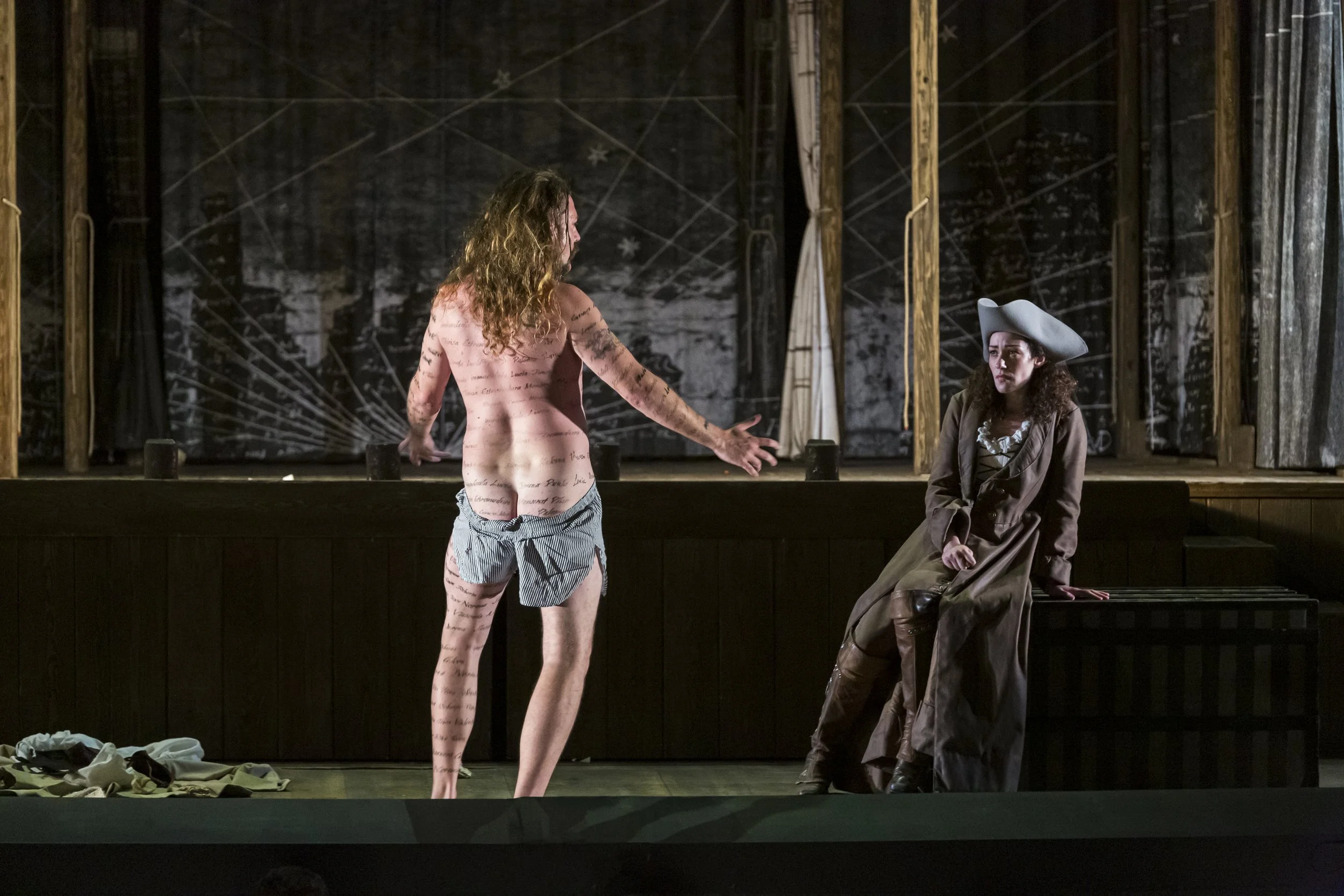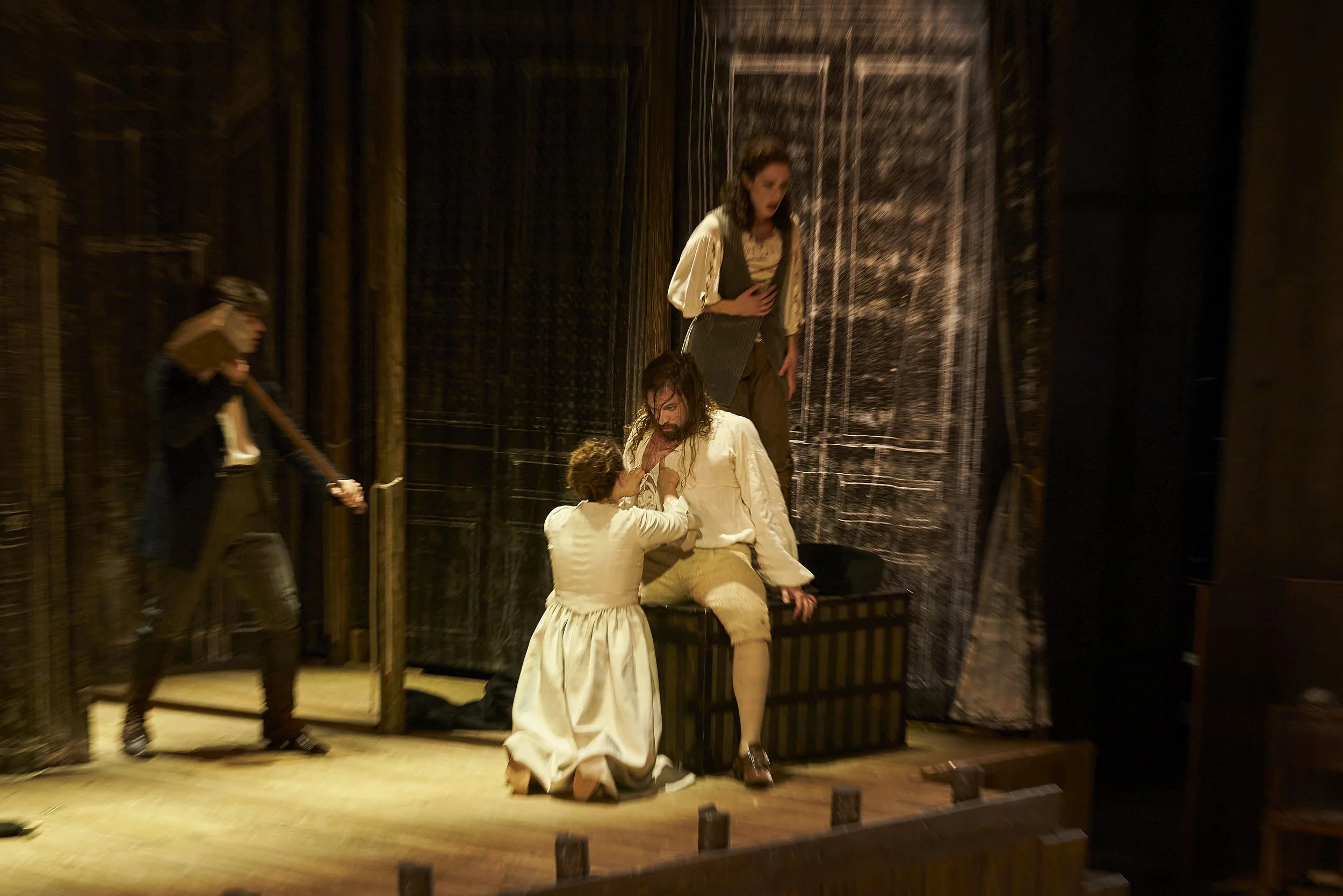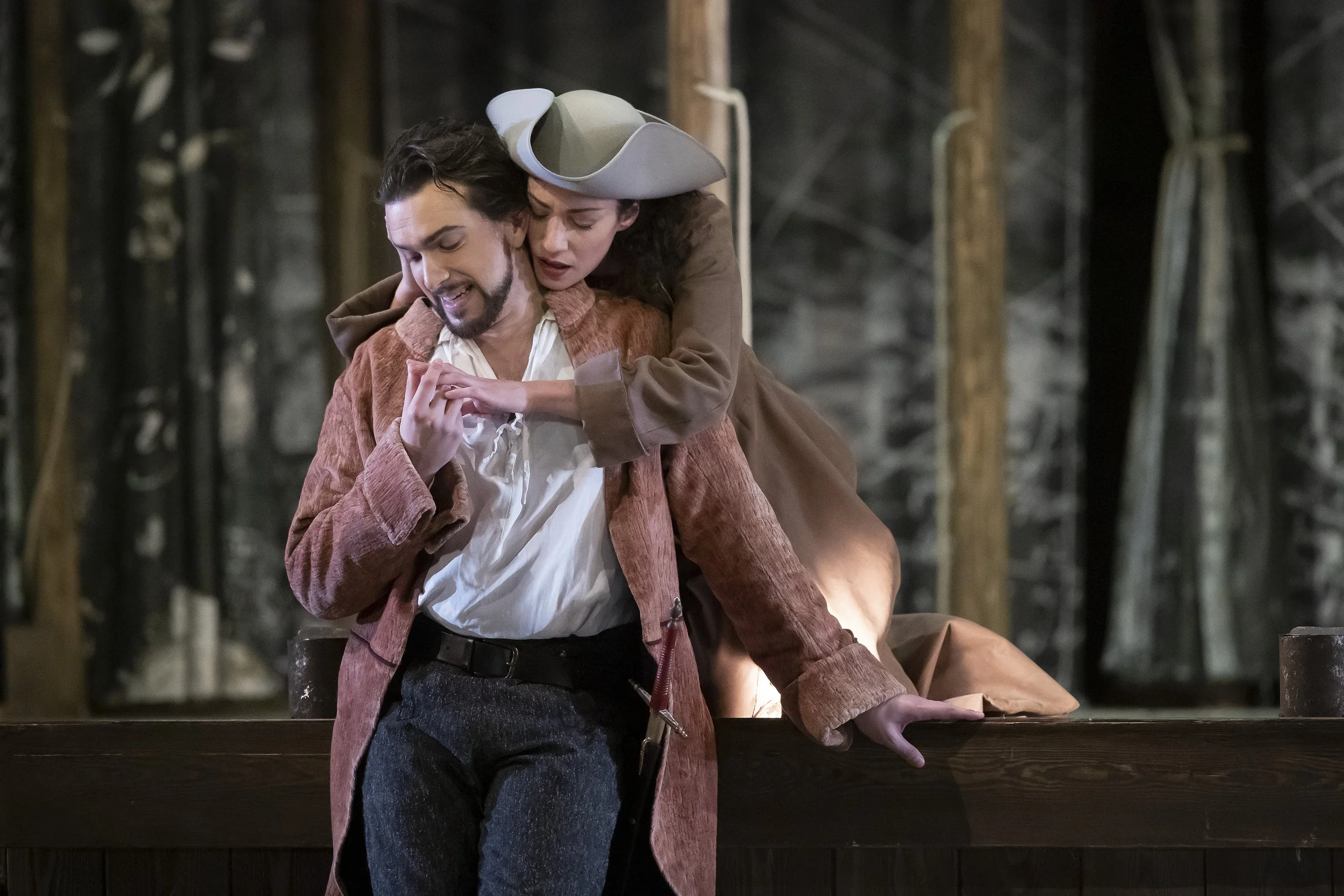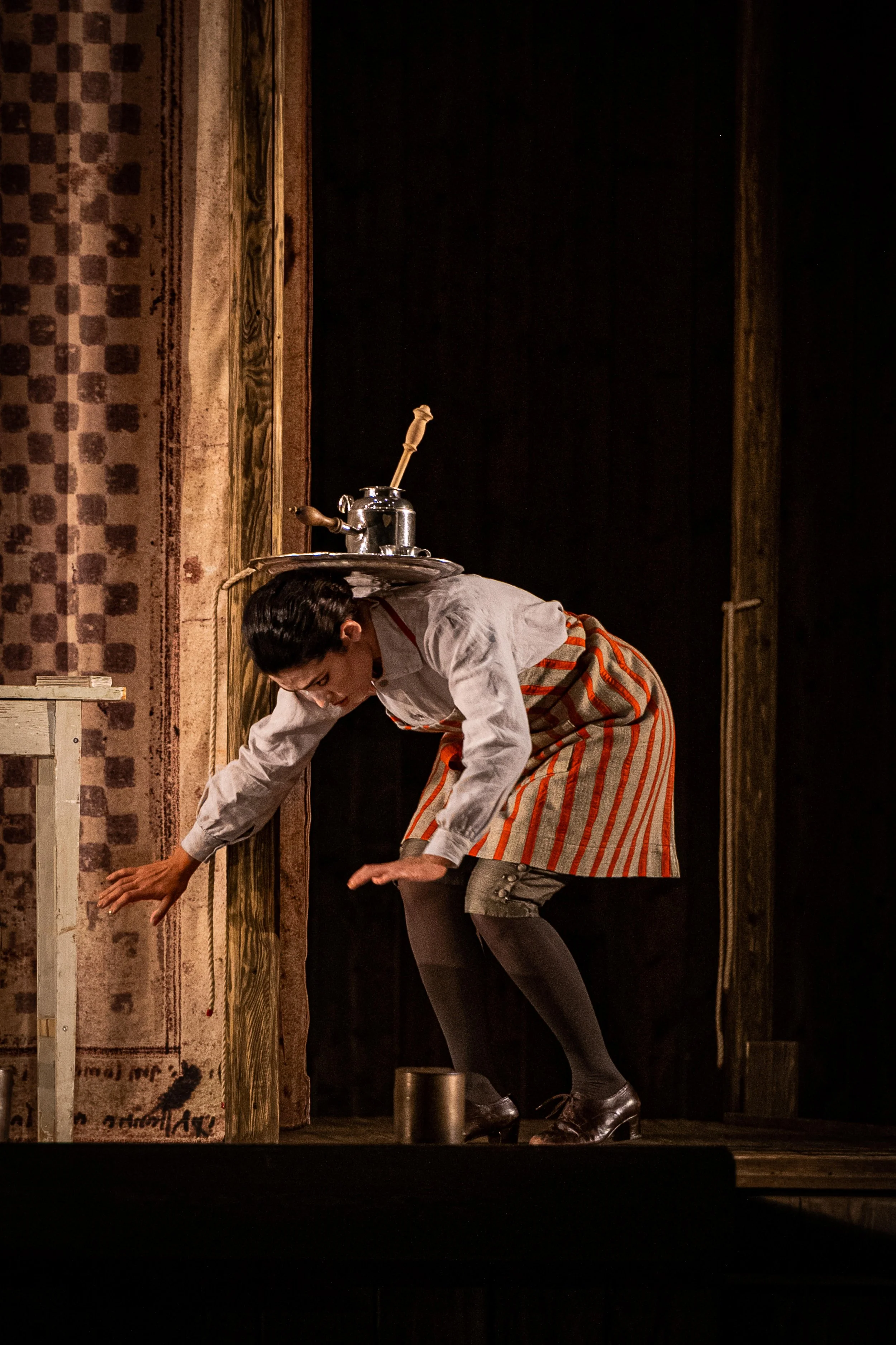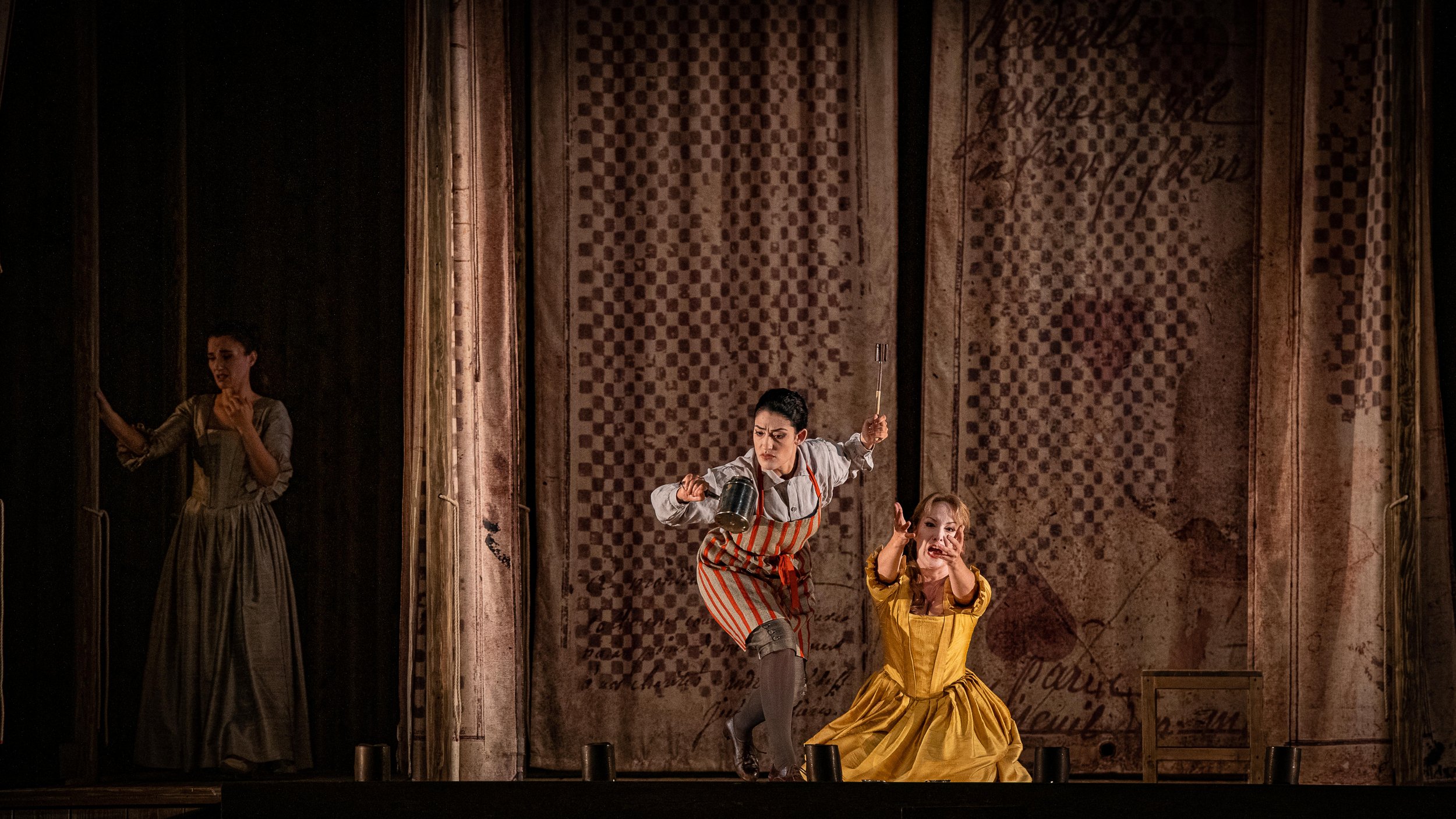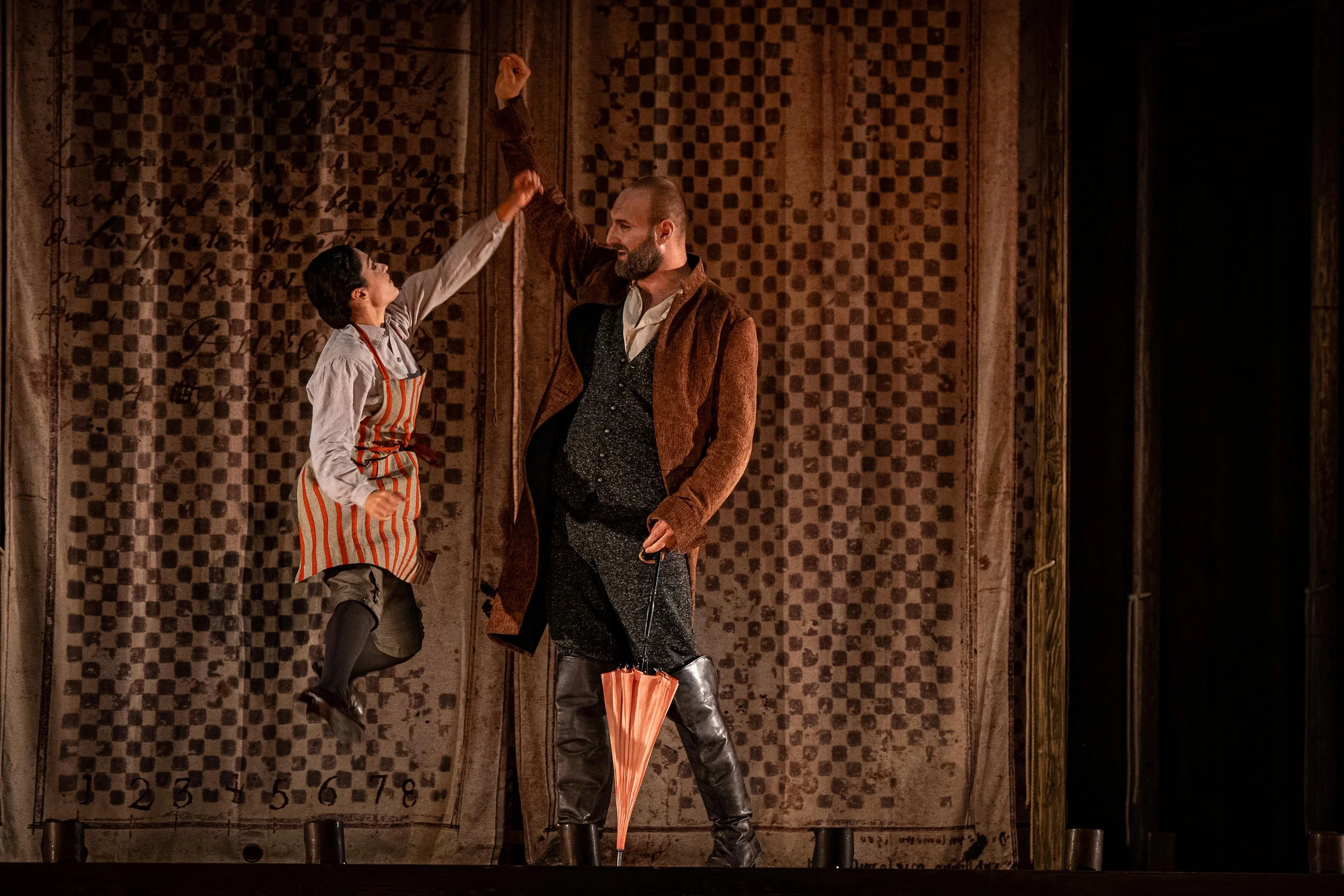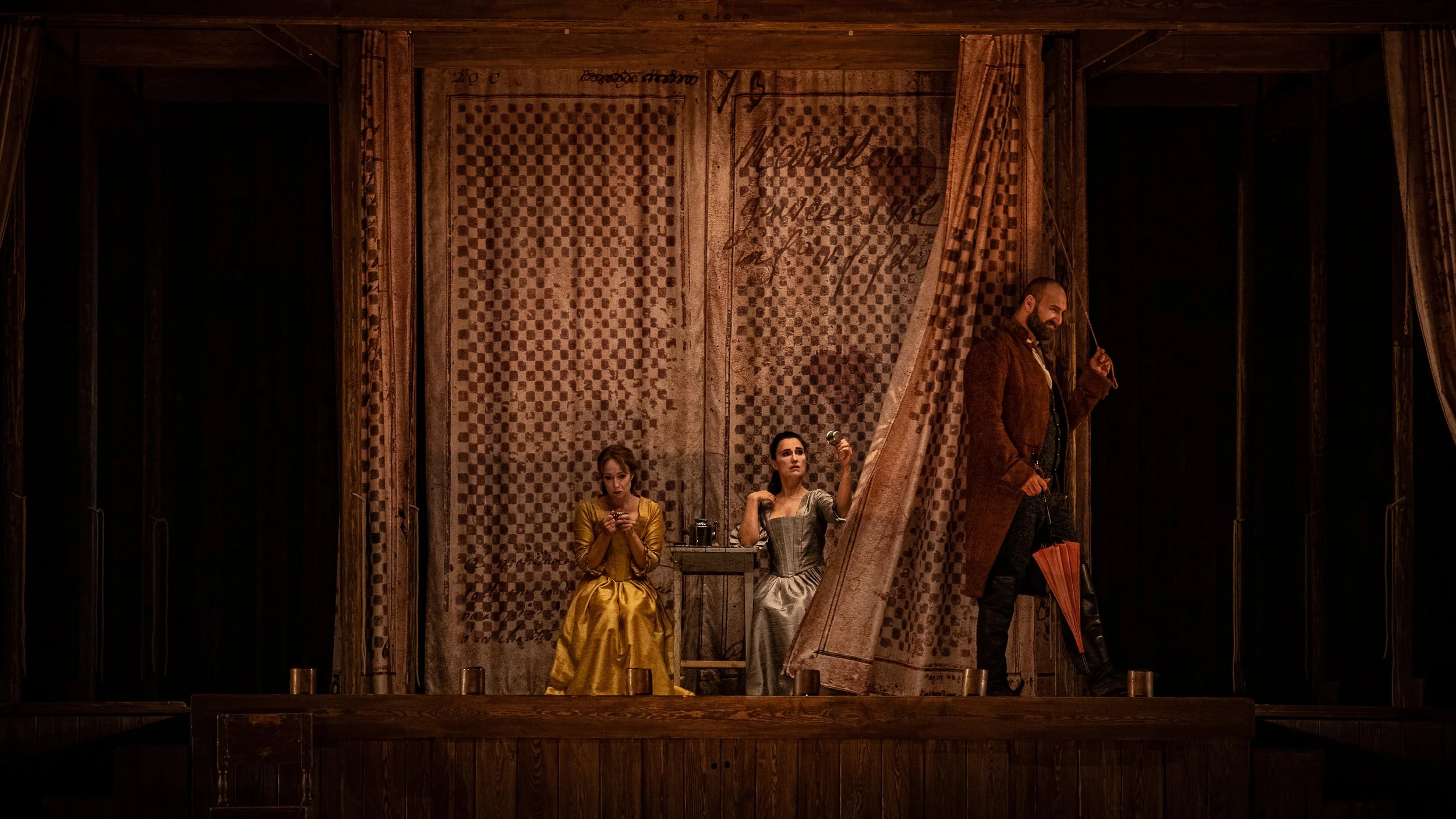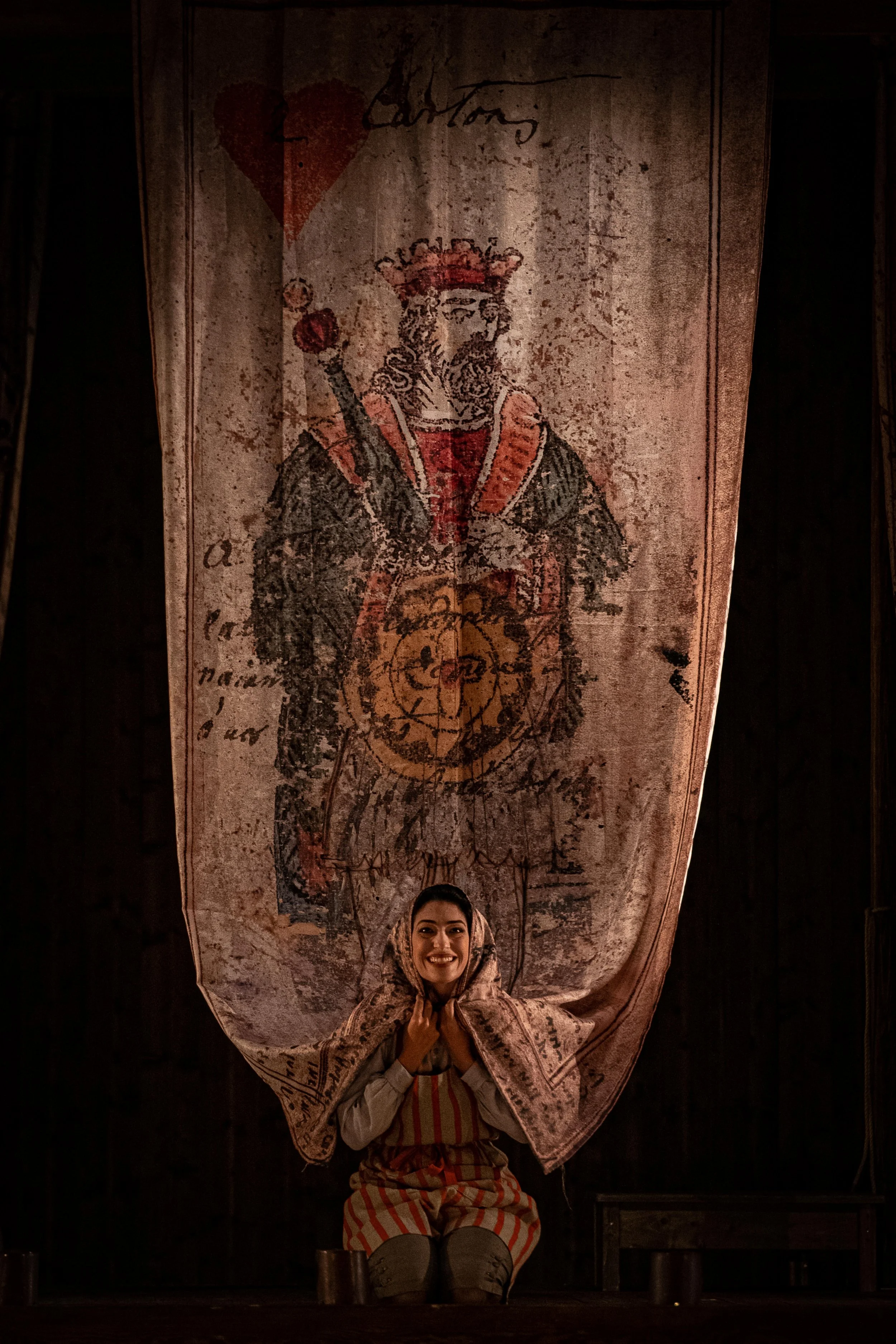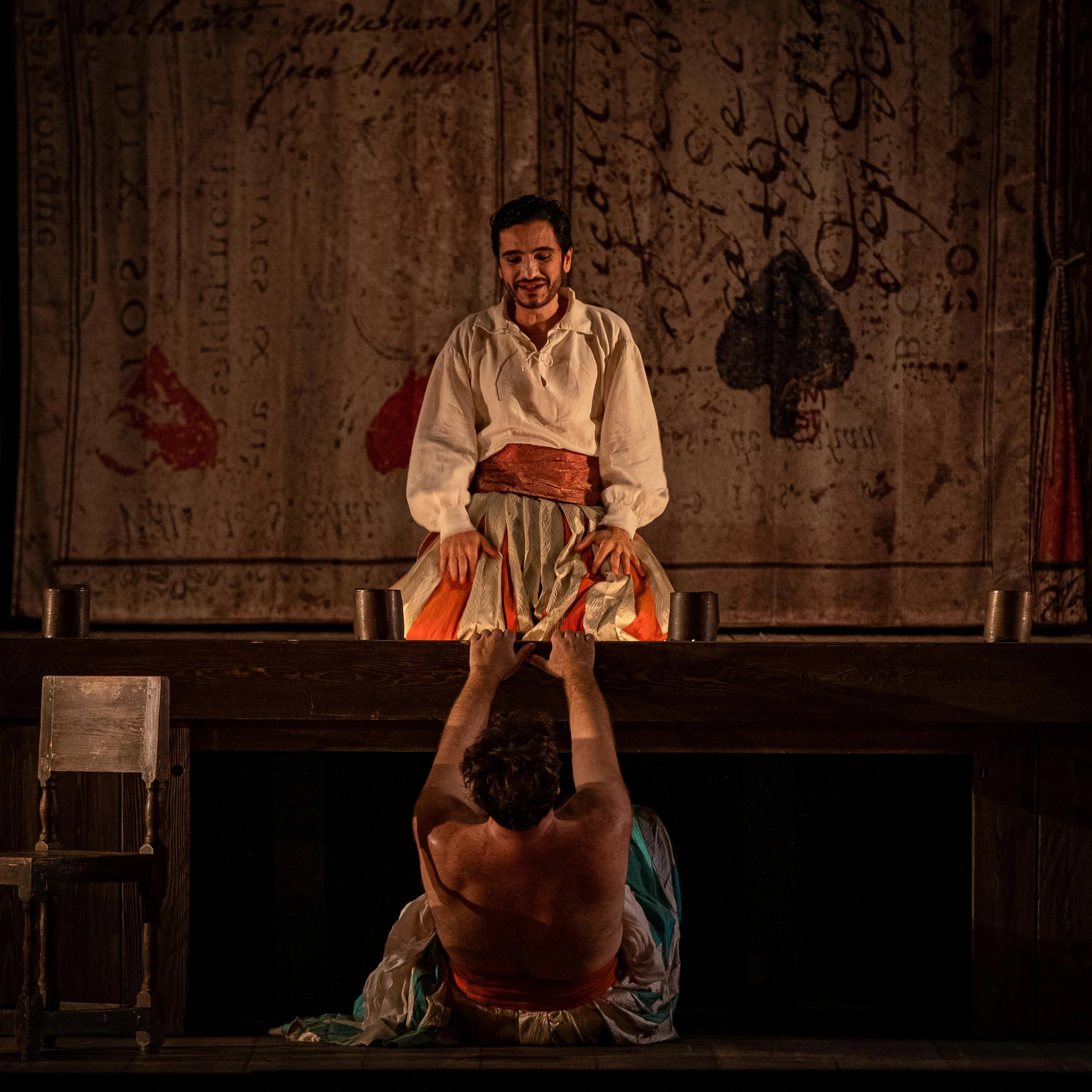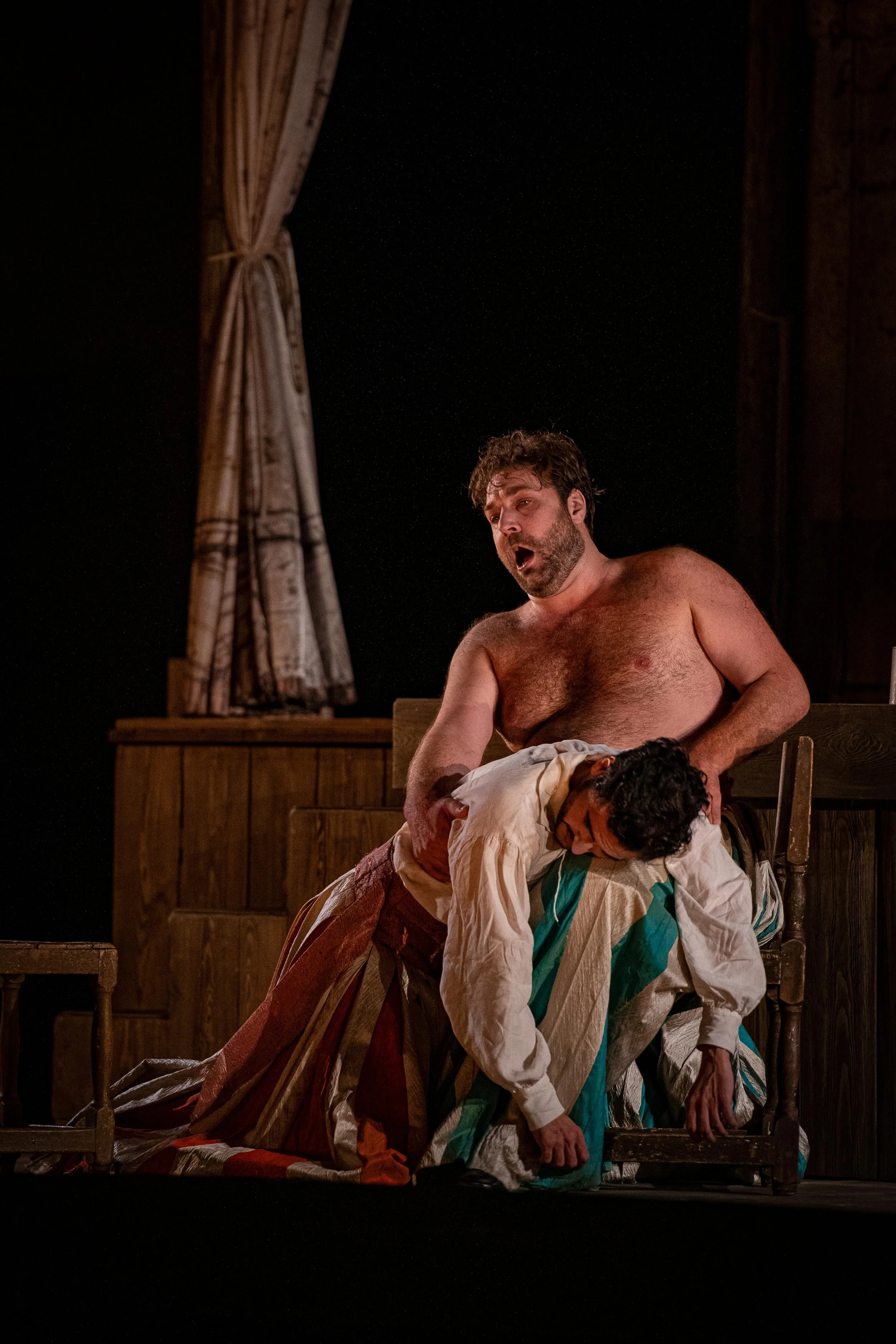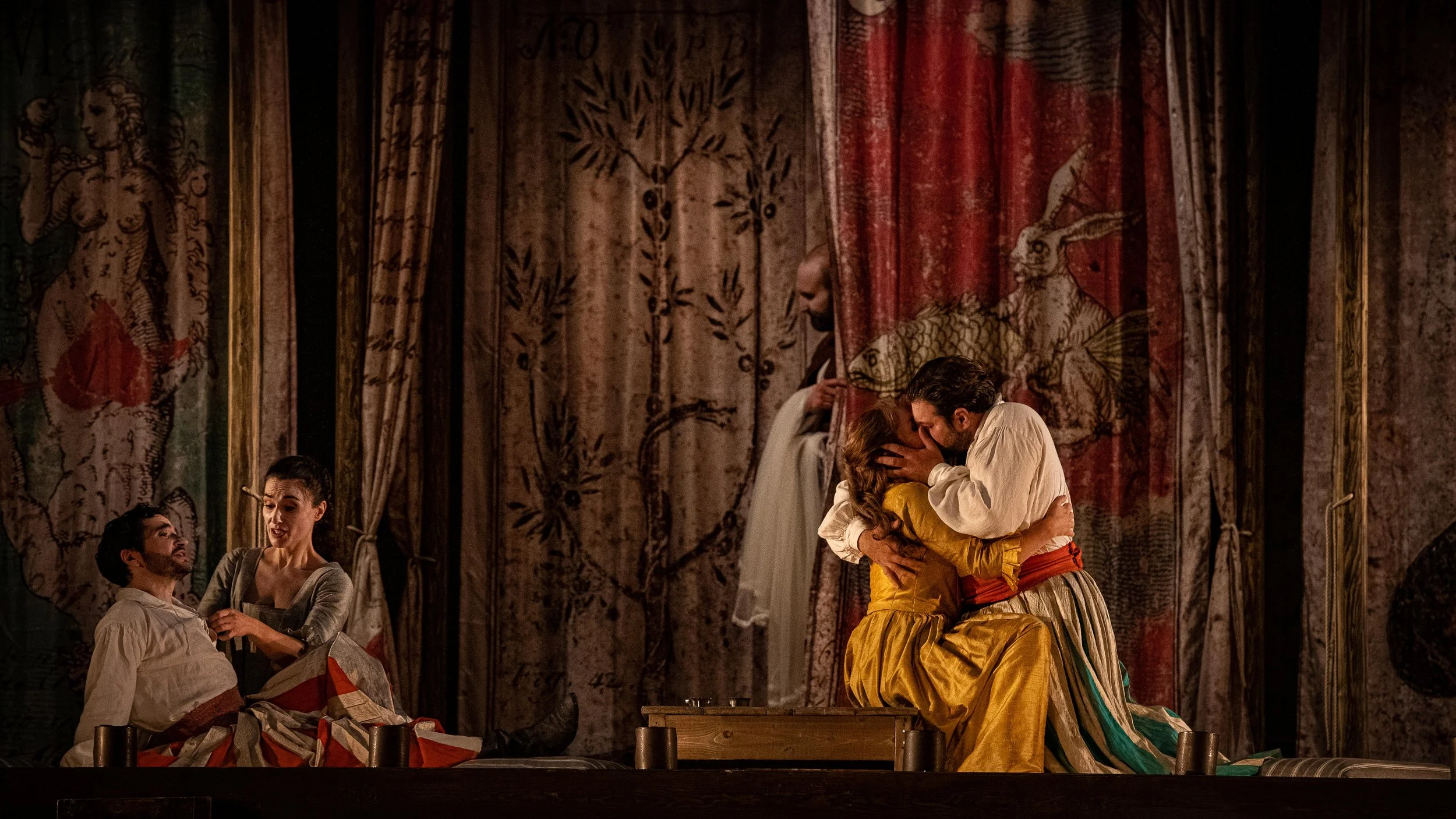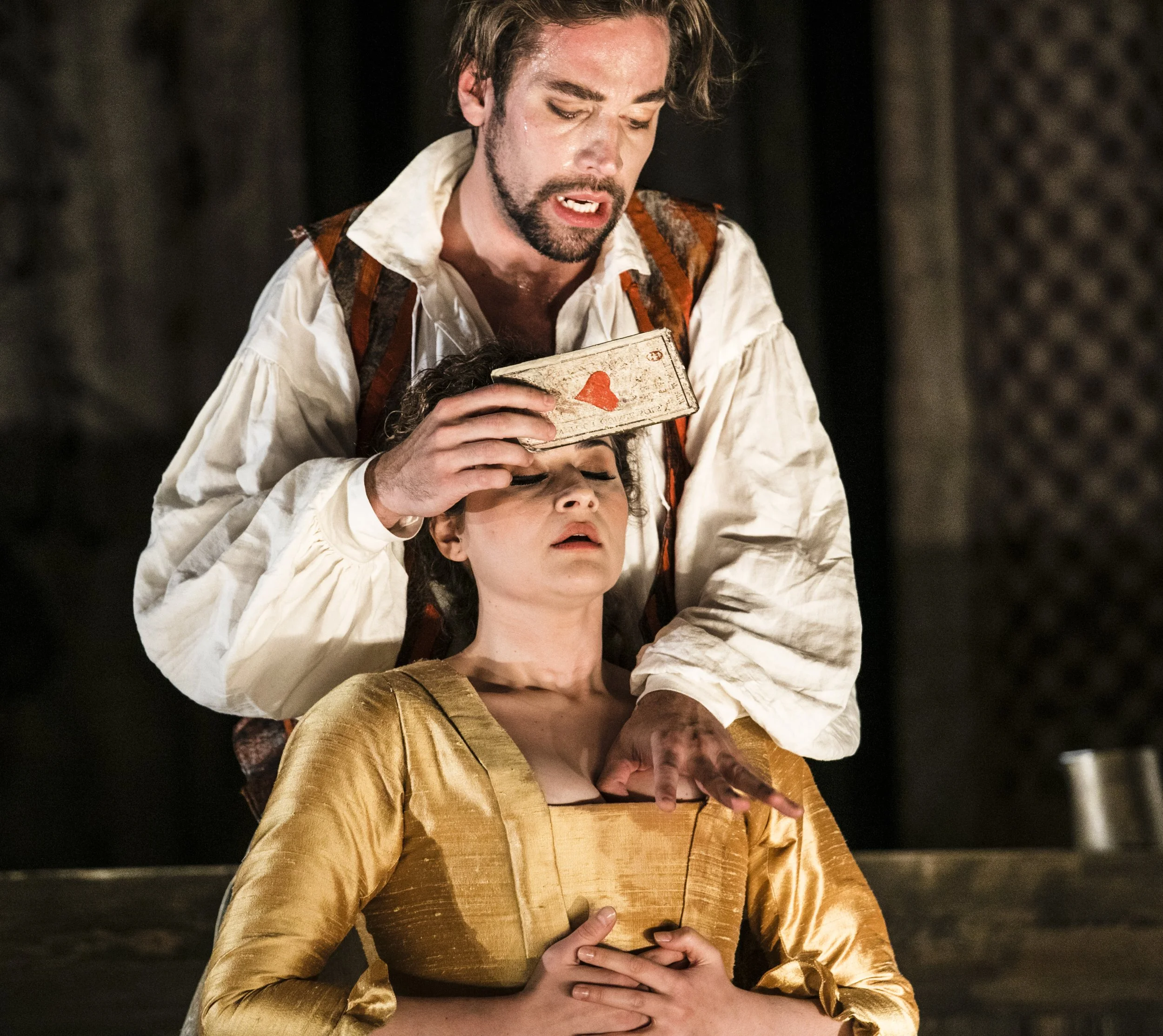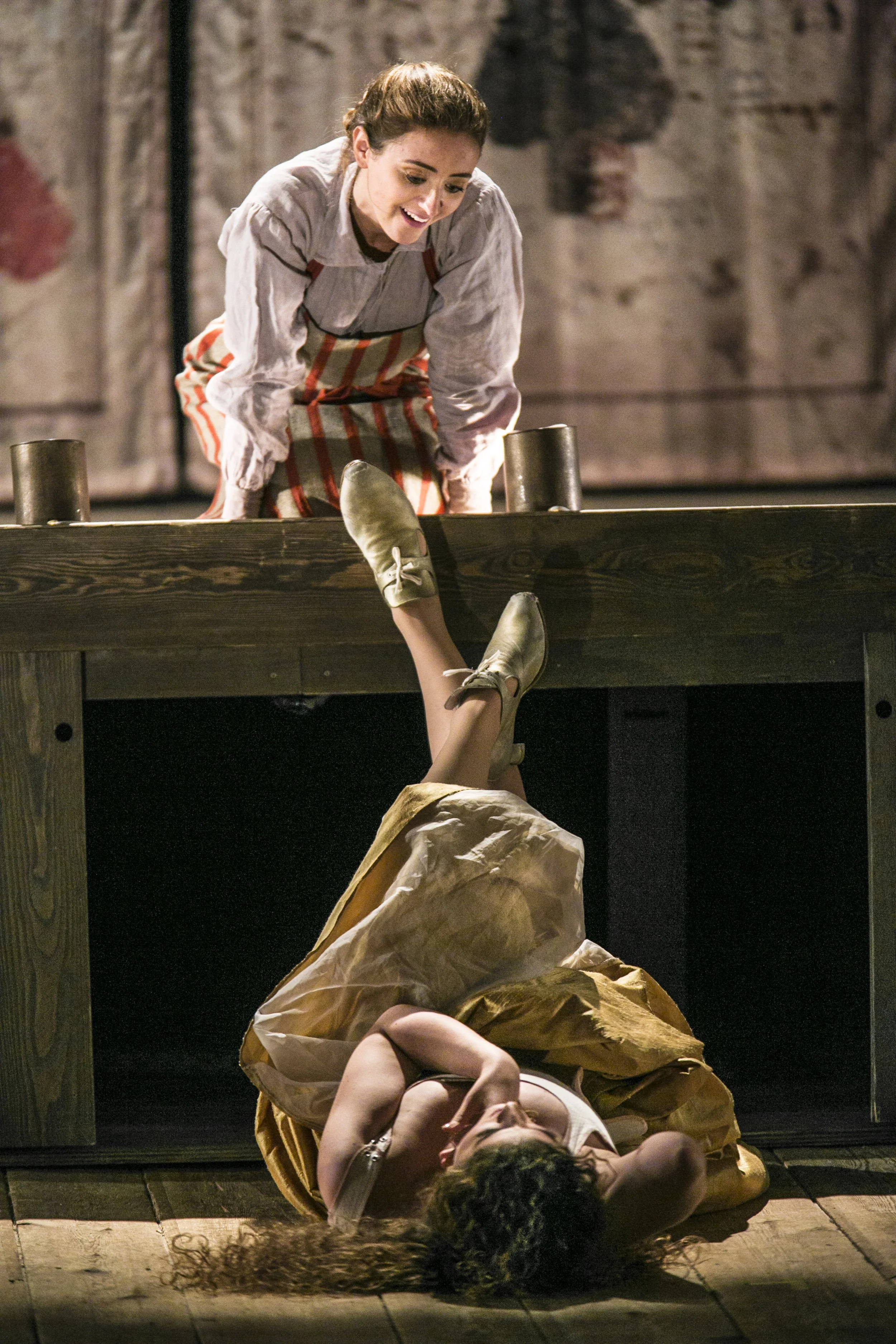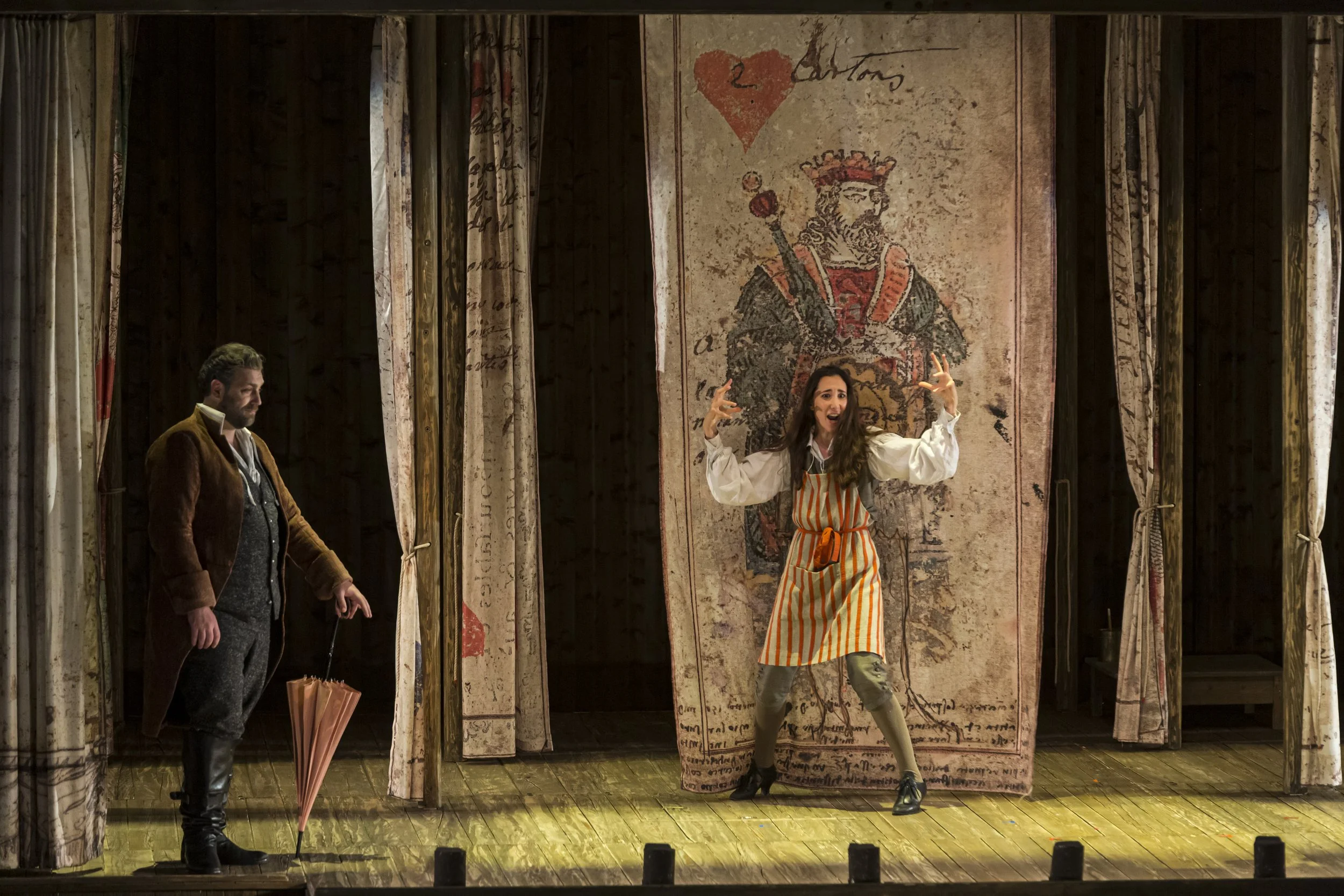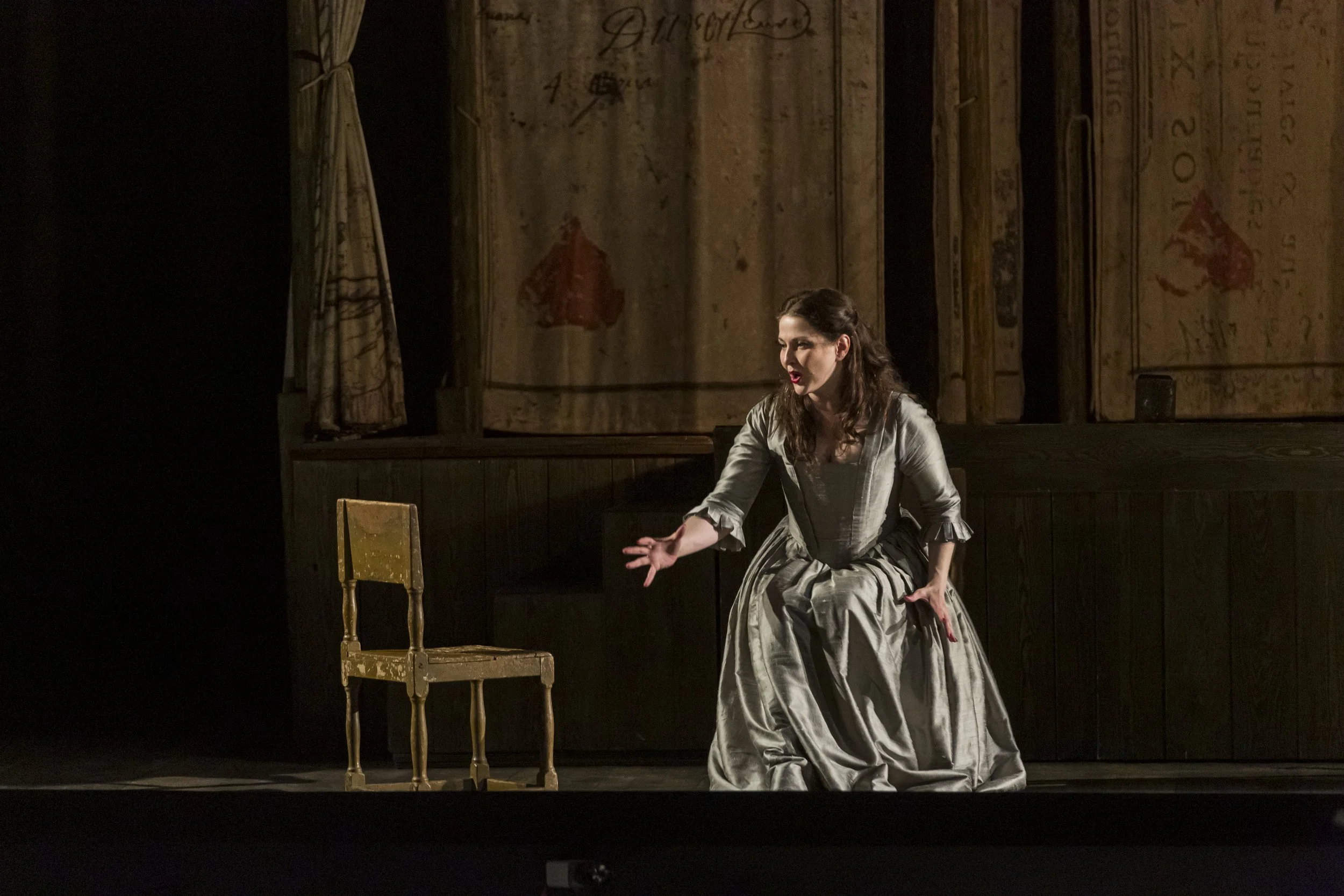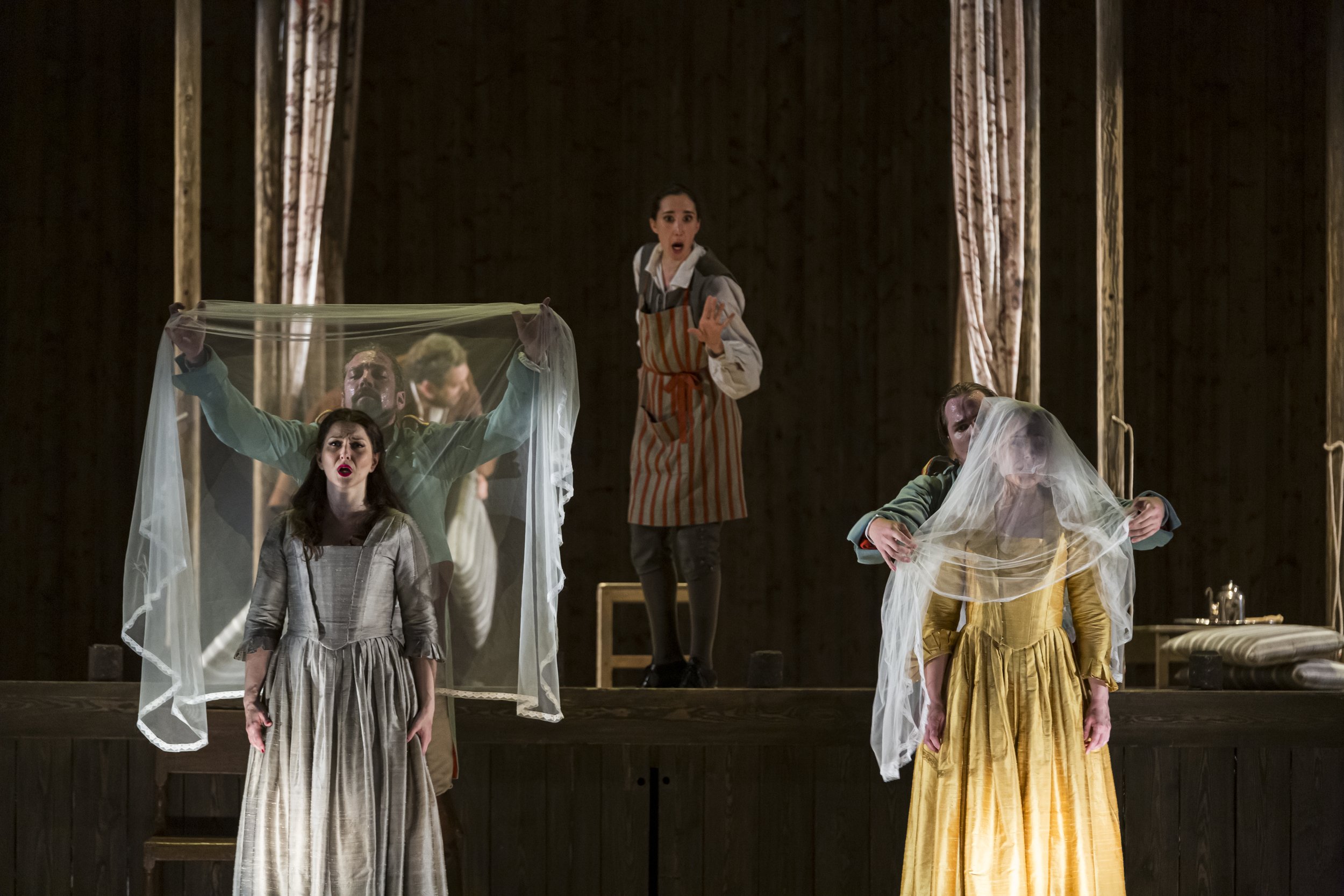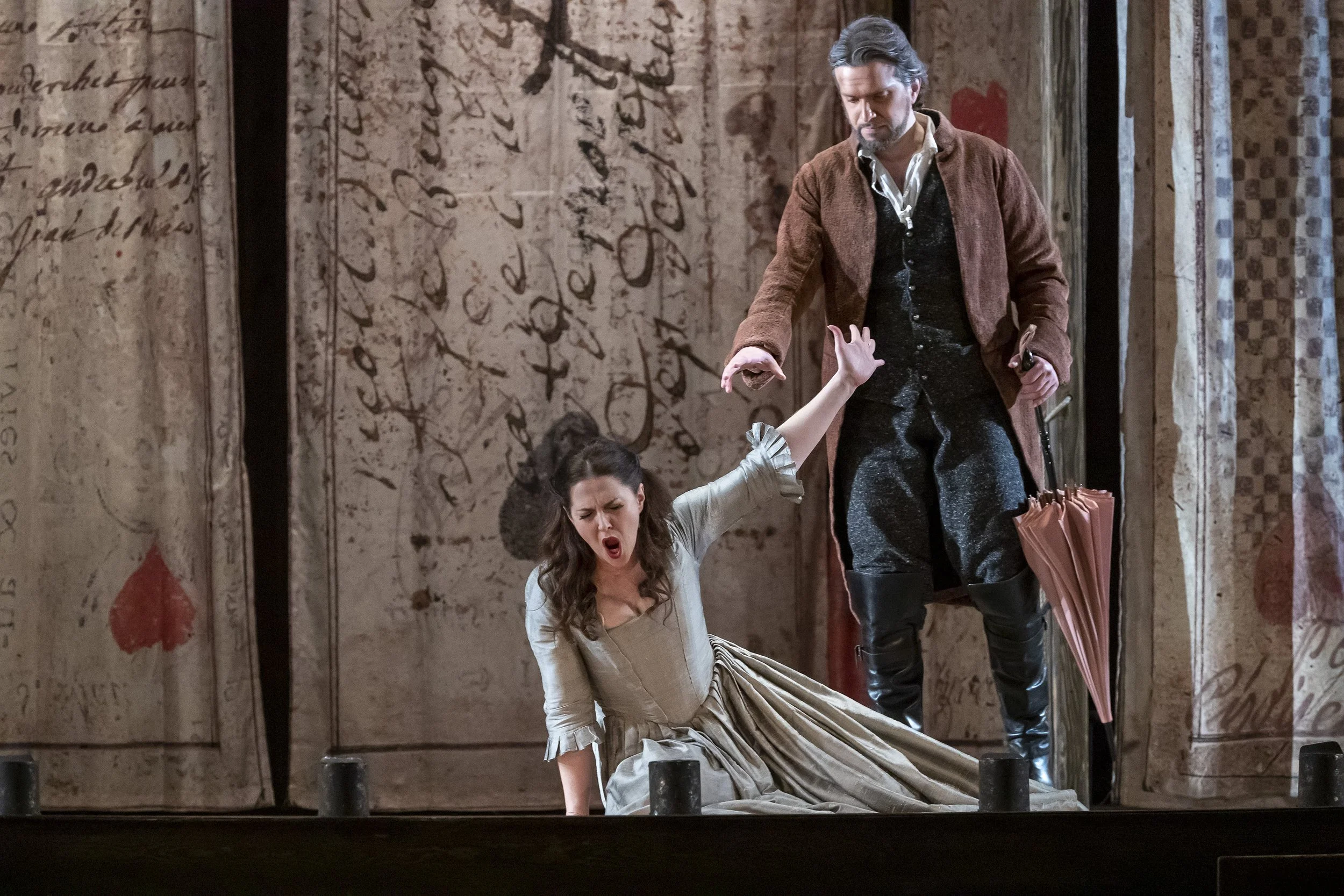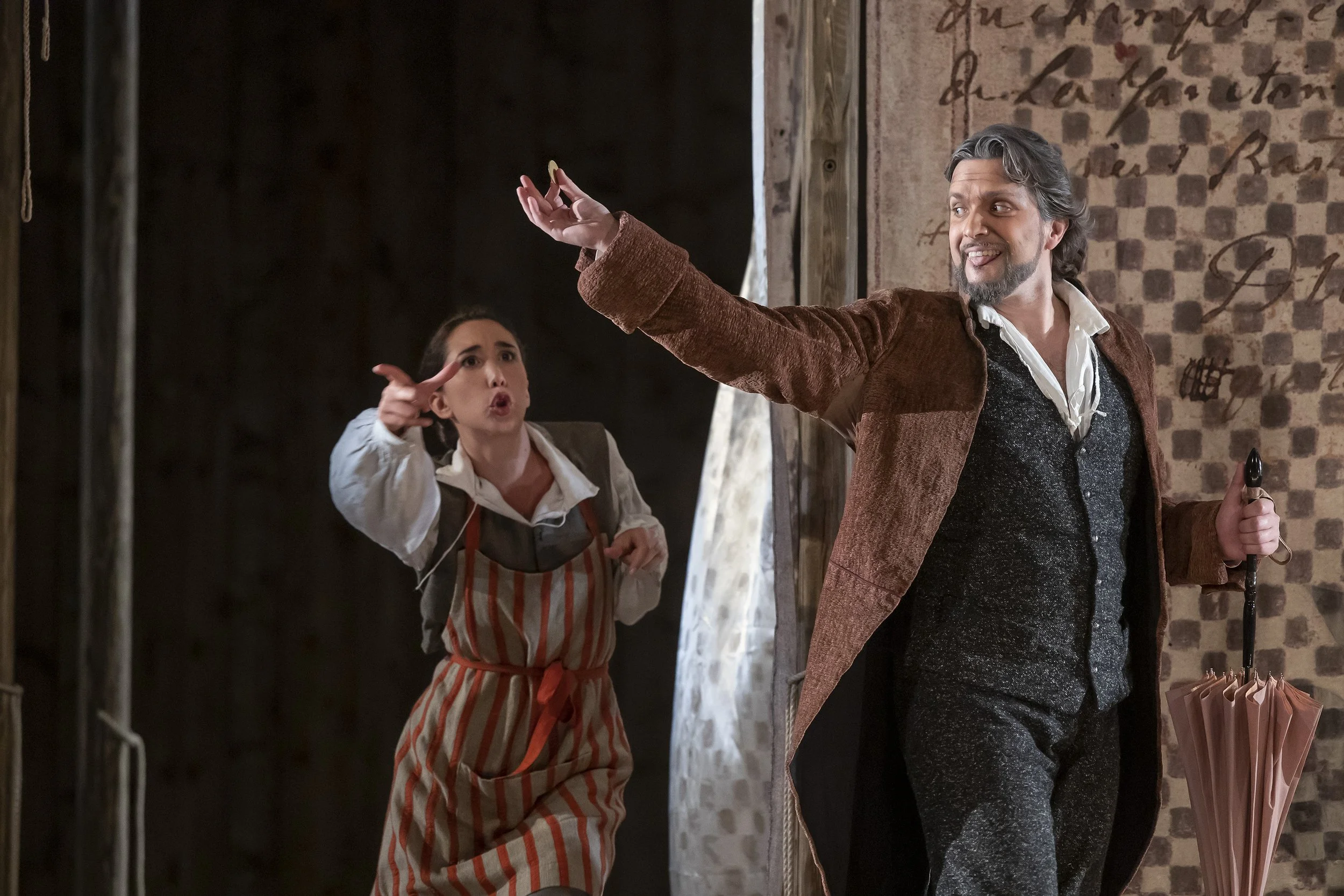TRILOGIE MOZART - DA PONTE
Le nozze di Figaro - Don Giovanni - Così fan tutte
WOLFGANG AMADEUS MOZART
Drottningholm Slottsteater, Opéra royal de Versailles, Capitole de Toulouse, Liceu Barcelona, Grand Théâtre de Bordeaux, Teatro Alighieri (Ravenna), Teatro Amintore Galli (Rimini), Teatro Giuseppe Verdi (Salerno)
MOZART
TRILOGIE DA PONTE
En 1783 le jeune Mozart rencontre un poète italien comme lui récemment établi à Vienne : l’abbé Lorenzo da Ponte. Ensemble, ces deux artistes aux destins contraires mais à l’instinct semblable donneront Le nozze di Figaro (Vienne 1786), Don Giovanni (Prague 1787) et Così fan tutte (Vienne 1790), opéras différents nés d’une même matrice comme trois enfants d’une même famille.
Des enfants si proches que nous n’avons pas voulu les séparer. Quelque chose s’est imposé à nous comme un personnage unique qui se glisserait d’une pièce à l’autre et unifierait la « trilogie », libertin au cœur inépuisable qui se nommerait Chérubin à l’adolescence, puis Don Giovanni à l’âge adulte, enfin Don Alfonso sur ses vieux jours. C’est l’histoire de ce personnage à la fois mystérieux et bien connu, dangereux et cordial, haïssable et adorable, que nous allons conter dans ce véritable Ring de Mozart.
Un seul héros. Un seul théâtre, donc, qui ne sera pas fastueux comme le théâtre « royal » de Mitridate ou d’Idomeneo, mais intime, improvisé comme ces tréteaux de foire où se produisaient alors les troupes italiennes. Pas de coulisses : tous en scène. Tous jouent à la fois le drame de Mozart et leur propre vie puisque c’est justement la frontière entre la scène et la vie que, dès Le nozze di Figaro, les auteurs ont voulu effacer. Quelques planches, quelques toiles légères et mobiles, pour faire place à l’action et aux sentiments, domaine où Da Ponte et son cadet musicien n’ont, dans l’histoire de l’opéra, à peu près aucun rival.
In 1783 the young Mozart met an Italian poet, like himself recently established in Vienna : Father Lorenzo da Ponte. Together, these two artists with opposite destinies but a similar instinct will give Le nozze di Figaro (Vienna 1786), Don Giovanni (Prague 1787) and Così fan tutte (Vienna 1790), different operas born from the same matrix as three children from the same family.
Children so close that we didn't want to separate them. For someone has imposed itself on us as a unique character who would slip from one room to another and unify the "trilogy", a libertine with an inexhaustible heart who would be called Cherubino in adolescence, then Don Giovanni in maturity, and Don Alfonso on his old age. This is the story of a mysterious and well-known character, dangerous and cordial, hateful and adorable, that we will tell in this real Mozart Ring.
One hero. A single theater, therefore, which will not be sumptuous like the "royal" theater of Mitridate or Idomeneo, but intimate, improvised like the fairgrounds where the Italian troops then performed. No backstage: everyone on stage. Every single one play both the drama of Mozart and their own life, since it is precisely the border between stage and life that, from Le nozze di Figaro, the authors have wanted to erase. A few boards, a few light and mobile canvases, in order to make room for action and feelings, an area where Da Ponte and his younger musician have, in the history of opera, hardly any rivals.
Le nozze di Figaro
Longtemps, longtemps après, Lorenzo Da Ponte raconte :
« Au fur et à mesure que je composais les paroles, Mozart composait la musique ; en six semaines tout était terminé. La bonne étoile de Mozart voulut que les partitions manquassent au théâtre.
« Comment, me dit [l’empereur Joseph II], vous savez que Mozart, remarquable pour la musique instrumentale, n’a jamais écrit pour la scène, une seule fois exceptée , et cette exception ne vaut pas grand-chose.
_ Moi-même, répliquai-je timidement, sans la bonté de l’empereur je n’eusse jamais écrit qu’un drame à Vienne.
_ C’est vrai ; mais cette pièce de Figaro, je l’ai interdite à la troupe allemande.
_ Je le sais ; mais, ayant transformé cette comédie en opéra, j’en ai retranché des scènes entières, j’en ai abrégé d’autres, et je me suis appliqué surtout à faire disparaître tout ce qui pouvait choquer les convenances et le bon goût ; en un mot, j’en ai fait une œuvre digne d’un théâtre que sa majesté honore de sa protection. »
Comme toujours, le poète brode. Figaro n’est ni le premier ni le deuxième opéra de Mozart mais son treizième – sans compter divers fragments et tentatives. Il a demandé plus de six semaines et les partitions ne manquaient pas à la jeune troupe d’opéra buffa formée à Vienne en 1783 – notamment depuis le triomphe du Barbiere di Siviglia de Paisiello que Mozart espérait égaler en écrivant la suite.
Mais il est vrai que la bonne étoile du compositeur brilla enfin assez pour que cette troupe italienne accepte l’œuvre d’un musicien allemand. Vrai que la pièce à scandale de Beaumarchais demeurait interdite quand son adaptation lyrique gagna la scène le 1er mai 1786. Vrai aussi qu’il s’agit d’un « opus 1 », la première d’un édifice que les opéras précédent d’Amadeus laissaient à peine deviner.
Tout est double dans ce drame joyeux de la tromperie. Noblesse du rang contre noblesse de l’âme ; raison (l’intrigue) contre folie (le tempo) ; malheureux stratagèmes (les hommes) contre heureux stratagèmes (les femmes). Tout se tient comme les rouages d’une horloge et tout paraît improvisé. Exactitude et improvisation forment donc l’aiguille de notre boussole. Et c’est à l’intérieur de l’horloge émotionnelle – sensationnelle – politique – érotique que nous proposons au public de nous suivre.
Long, long after, Lorenzo Da Ponte wrote:
“As I composed the lyrics, Mozart composed the music; in six weeks it was all over. Mozart's lucky star wanted the scores to be missing from the theater.
I took the opportunity to go and see the emperor, without telling anyone, and offer him The Marriage of Figaro. "How," he said to me, "you know that Mozart, remarkable for instrumental music, never wrote for the stage, except once, and this exception is not worth much.
- "Myself," I replied timidly, "without the emperor's kindness I would never have written more than a drama in Vienna."
- That is true ; but this piece of Figaro, I have forbidden the German troops.
- I know ; but, having transformed this comedy into an opera, I cut out entire scenes, cutting others short, and I applied myself above all to avoid anything that could offend morality and good taste; in short, I have made it a work worthy of a theater which his majesty honors with his protection. "
As always, the poet embroiders. Figaro is neither Mozart's first nor second opera, but his thirteenth - not to mention various fragments and attempts. It took much more than six weeks, and scores were plentiful for the young Buffa opera troupe formed in Vienna in 1783 – notably since the triumph there of Paisiello’ Barbiere di Siviglia, probably the main reason why Mozart chosed this Figaro sequel.
But it is true that the composer's lucky star finally shone enough for this Italian troupe to accept the work of a German musician. True that Beaumarchais' scandalous play was still banned when its lyrical adaptation hit the stage on May 1, 1786. It is also true that it is an “opus 1”, the first of a building that the previous operas of Amadeus barely hinted at.
Everything is twofold in this joyous drama of deception. Nobility of rank versus nobility of soul; reason (the plot) versus madness (the tempo); unfortunate stratagems (men) against happy stratagems (women). Everything is held together like the cogs of a clock and everything seems improvised. Accuracy and improvisation therefore form the needle of our compass. And it is inside the emotional - sensational - political - erotic clock that we offer the audience to follow us.
Don Giovanni
Les années ont passé. Cherubino a quitté les Almaviva pour s’établir dans son propre domaine, à Séville ou ailleurs. Il n’est plus le poupon androgyne qui faisait rêver la Comtesse. Pour échapper au régiment, il a dû épouser la petite Barbarina, aussitôt délaissée comme il délaissera les autres : impossible de choisir, impossible de jouer le jeu collectif de la famille, de la fidélité ou même de l’amour. Rien ne compte plus qu’une femme à séduire, rien de compte moins qu’une femme séduite.
Le plaisir est comme l’horizon : plus on l’approche, plus il s’éloigne. Le séducteur marche, marche, marche. Tous les autres, toutes les autres, s’épuisent à courir derrière cette force aveugle qui détecte ses proies à l’odeur et ne se retourne jamais, même pour les admirer. L’homme radieux ne sait même pas qu’il fuit. Il ment comme il respire, tue comme il aime, avec insouciance, ne doute jamais – jusqu’au jour où une statue lui parle.
À côté du padrone chemine son double, Leporello, nouveau visage de Figaro qui n’est pas seulement le serviteur, mais aussi la mémoire vive (le catalogue) de l’enjôleur amnésique. Derrière eux s’épuisent un (trop) jeune chevalier en quête de destin héroïque et amoureux, un paysan jaloux et trois femmes : la vierge tragique Donna Anna, cousine de Chimène qui doit survivre et combattre après le meurtre de son père ; l’épouse délaissée Donna Elvira, souvenir amer de celle qui fut jadis la confiante Barbarina ; enfin la mozartienne par excellence, la généreuse, la trouble Zerlina, tiraillée comme Eve entre le ciel et la pomme.
Le théâtre n’a pas changé. Mais si Figaro se déroulait pendant une « folle journée », Don Giovanni qui lui succède sera sa « folle nuit ». Ce qui était soleil devient lune, ce qui était lumière devient ombre, ce qui était majeur devient mineur. La comédie est bien là, mais nocturne, rêvée.
Un mot enfin de la partition. En 1787, pour la première et dernière fois de sa vie, à Prague où Figaro vient de lui valoir un triomphe inimaginable, Mozart fait ce qu’il veut. Nous jouons donc ce Don Giovanni originel, celui que Mozart a voulu, sans aucun des compromis imposés lors de la reprise à Vienne l’année suivante. Don Giovanni comme au premier soir.
The years have passed. Cherubino left the Almavivas to settle in his own domain, in Seville or elsewhere. He is no longer the androgynous teenager that the Countess dreamed of. To escape the regiment, he had to marry young Barbarina, immediately abandoned as he will abandon others: impossible to choose, impossible to play the collective game of family, loyalty or even love. Nothing matters more than a woman to be seduced, nothing matters less than a woman who is seduced.
Pleasure is like the horizon: the closer you get to it, the further it goes. The seducer walks, walks, walks. Everyone else is exhausted running behind this blind force that detects its prey by smell and never turns back, even to admire. The radiant man doesn't even know he's running away. He lies as he breathes, kills as he loves, carelessly, never doubts - until one day a statue speaks to him.
Next to the padrone walks his double, Leporello, the new face of Figaro who is not only the servant, but also the living memory (the catalogo) of the amnesiac captor. Behind them exhaust a (too) young knight in search of a heroic and amorous destiny, a jealous peasant, and three women: the tragic virgin Donna Anna, Chimene's cousin who must survive and fight after the murder of her father; the abandoned wife Donna Elvira, a bitter memory of the once confident Barbarina; finally the Mozartian voice par excellence, the generous, the troubled Zerlina, torn like Eve between the sky and the apple.
The theater has not changed. But if Figaro took place during a "crazy day", Don Giovanni will be its "crazy night". What was sun becomes moon, what was light becomes shadow, what was major becomes minor. The comedy remains, but nocturnal, dreamy.
Just a word from the score. In 1787, for the first and last time in his life, in Prague where Figaro had won him an unimaginable triumph, Mozart did only and entirely what he wanted. So we play this original Don Giovanni, the one that Mozart achieved without any of the compromises imposed during the revival in Vienna the following year. Don Giovanni as on the first evening.
Così fan tutte
Le jouvenceau Chérubin qui voulait faire lire sa romance « à la Comtesse, à Suzanne, à Barbarina, à Marcellina, à toutes les femmes du palais », a dû épouser la confiante Barbarina pour échapper au régiment. Quelques années plus tard, devenu expert en conquêtes sans lendemain sous le masque de Don Giovanni, il a déjà inscrit sur le catalogue que tient son valet (sa mémoire) 2065 noms – mille et trois rien qu’en Espagne. « N’importe qu’elle soit riche, qu’elle soit laide, qu’elle soit belle, chante Leporello, pourvu qu’elle porte le jupon, vous savez ce qu’il fait ».
D’autres années passent. Le séducteur ne « fait » plus. Aux enfers où l’a envoyé la statue du Commandeur à la fin de Don Giovanni, il a laissé son pouvoir, et ses charmes. Le voici « vieux philosophe » – de quelle philosophie ? une philosophie de boudoir, dirait au même moment le marquis de Sade, mais Da Ponte ne dit rien, comme il se garde d’accorder à ses personnages toute forme de passé. A la différence des protagonistes de Figaro et de Don Giovanni, les figures de Così fan tutte n’ont pas d’histoire. Pages blanches, leur histoire commence maintenant.
En 1790, ce que ni Da Ponte ni Mozart n’avaient envisagé quatre ans plus tôt comme une « trilogie » trouve dans tous ses thèmes un accomplissement. L’essence du dramma giocoso. Comment font-elles ? Comment font-ils ? Comment faisons-nous ? Réponse dans trois heures.
The young Cherubino, who wanted to have his song read "to the Countess, to Susanna, to Barbarina, to Marcellina, to all the women of the palace", had to marry the confident Barbarina to escape the regiment. A few years later, having become an expert in short-lived conquests under the mask of Don Giovanni, he has already entered in the catalog held by his valet (his memory) 2,065 names - a thousand and three in Spain alone. "It doesn't matter how rich, how ugly, how beautiful," sings Leporello, "as long as she wears the petticoat, you know what he's doing."
More years go by. The seducer no longer "does". In the underworld where the statue of the Commander sent him at the end of Don Giovanni, he left his power, and his charms. Here he is now an "old philosopher" - of what philosophy? a “boudoir philosophy”, the Marquis de Sade would say at the same time, but Da Ponte says nothing, as he is careful not to grant his characters any past experience. Unlike the protagonists of Figaro and Don Giovanni, the figures of Così fan tutte have no history. White pages, their story begins now.
In 1790, what neither Da Ponte nor Mozart had envisioned four years earlier as a "trilogy" finds fulfillment in all of its themes. The essence of dramma giocoso. How do they do it? How do they do ? How do we do ? Answer in three hours.
Set and costume designer : Antoine Fontaine
With : Miriam Albano, Krzysztof Bacik, Stanislas de Barbeyrac, Paolo Battaglia, Jean-Sébastien Bou, Julie Boulianne, Angela Brower, Sandrine Buendia, Valentina Coladonato, Anders J. Dahlin, Clemente Antonio Daliotti, Iulia Maria Dan, Nico Darmanin, Lea Desandre, Thomas Dolié, Lucrezia Drei, Alexandre Duhamel, Christian Federici, Paco Garcia, Ingeborg Gillebo, Anne-Catherine Gillet, Robert Gleadow, Julien Henric, Marie-Adeline Henry, Hanna Husàhr, Ana Maria Labin, Alix Le Saux, James Ley, José Maria Lo Monaco, Serena Malfi, Iolanda Massimo, Norman Patzke, Lenneke Reuten, Alex Rosen, Maria Savastano, Giulia Semenzato, Florian Sempey, Jean-Fernand Setti, Chiara Skerath, Callum Thorpe, Camilla Tilling, Miriam Treichl, Fabio Trumpy, Arianna Vendittelli, Mathias Vidal, Anicio Zorzi Giustiniani.
Photos : Mats Backer, David Ruano, Paco Amate, Mirco Magliocca and Éric Bouloumié.





